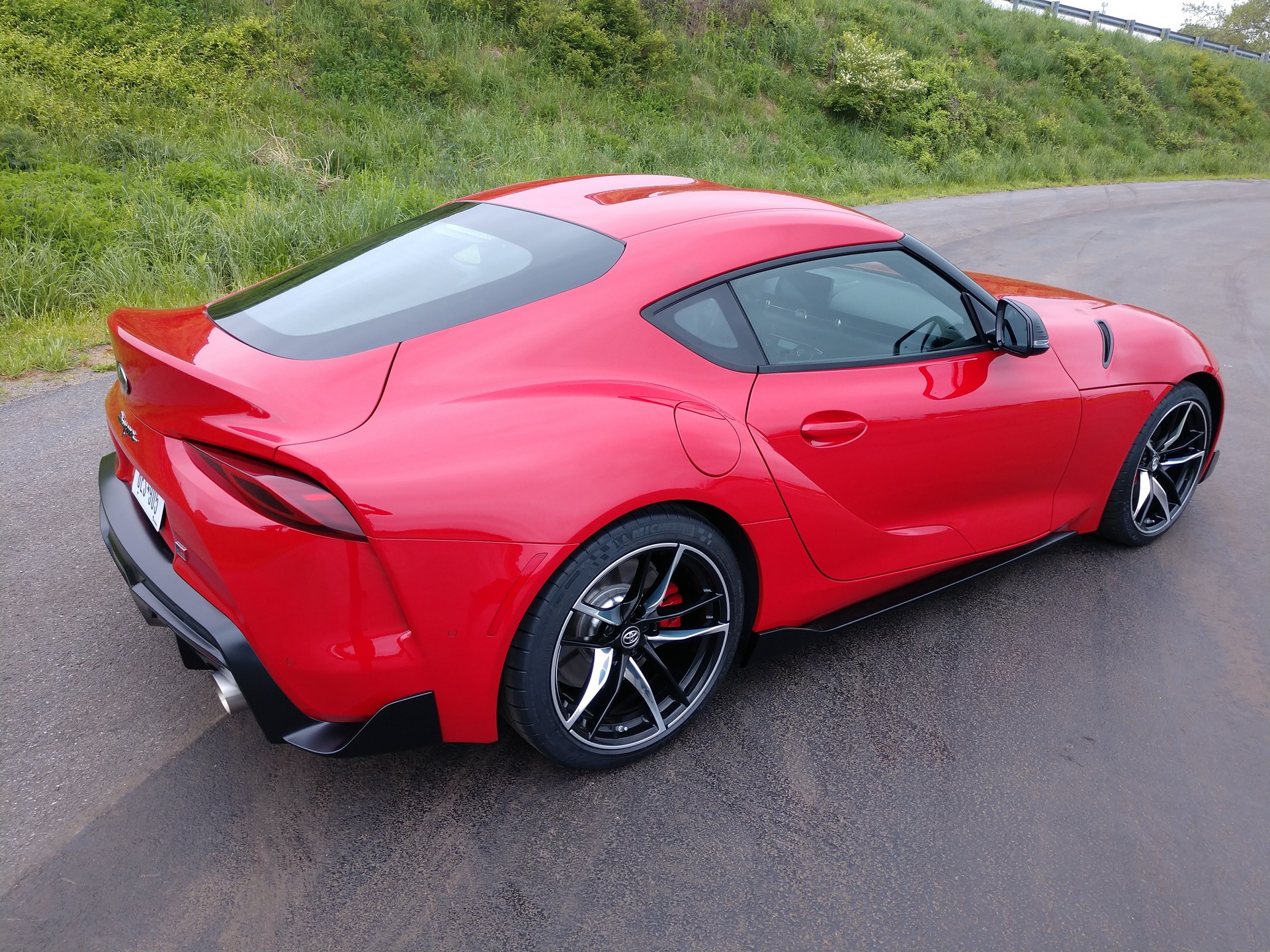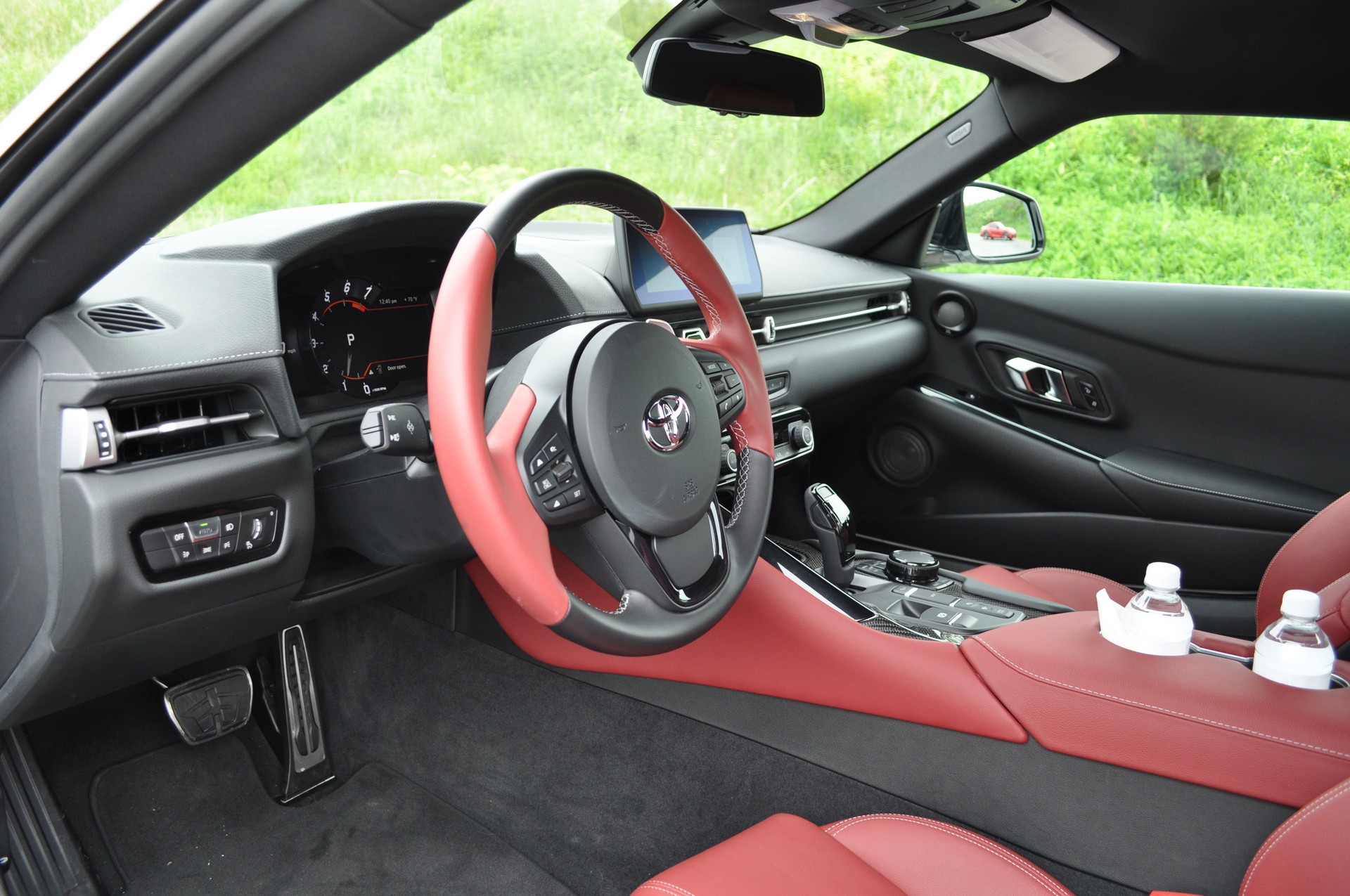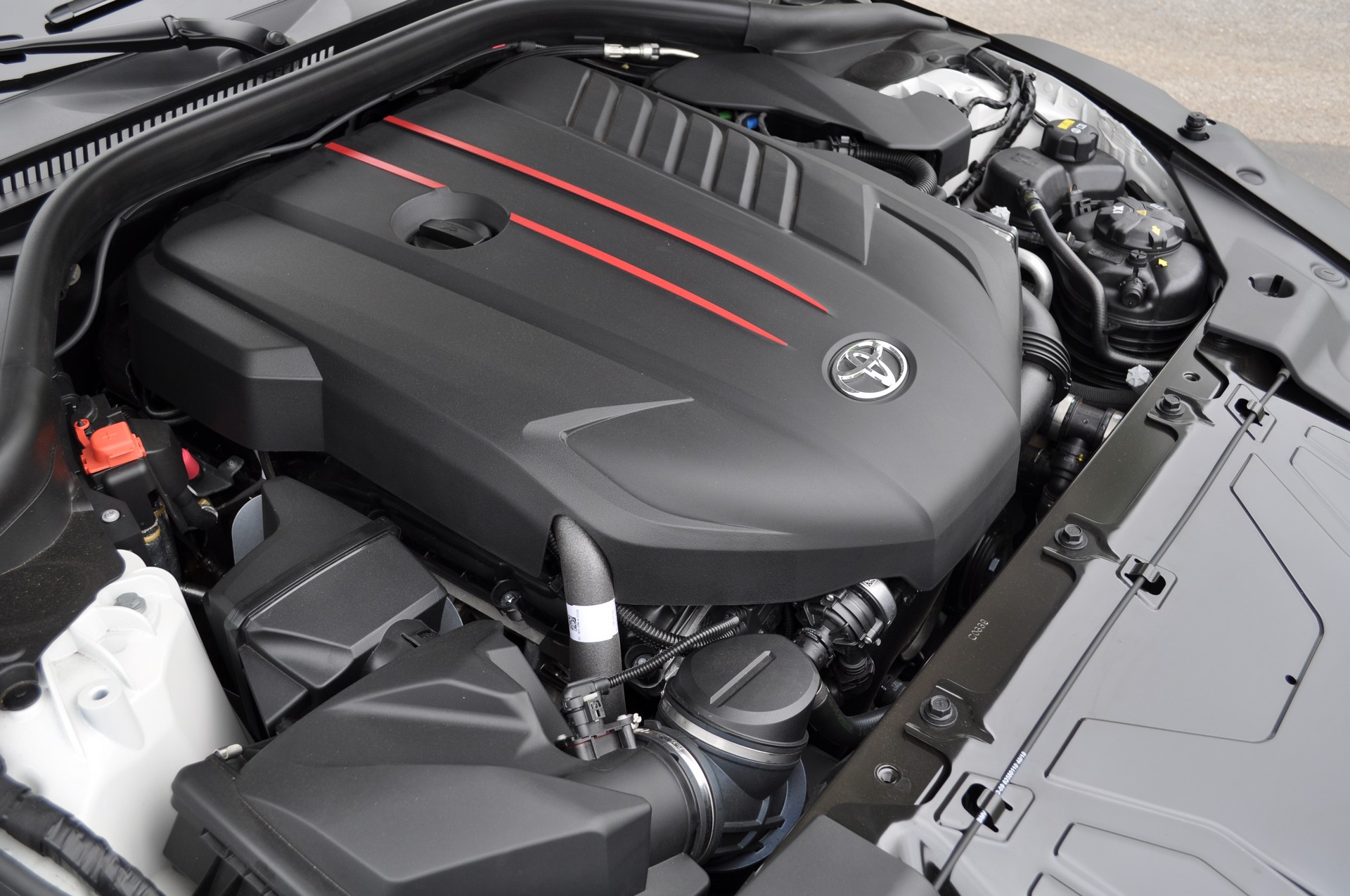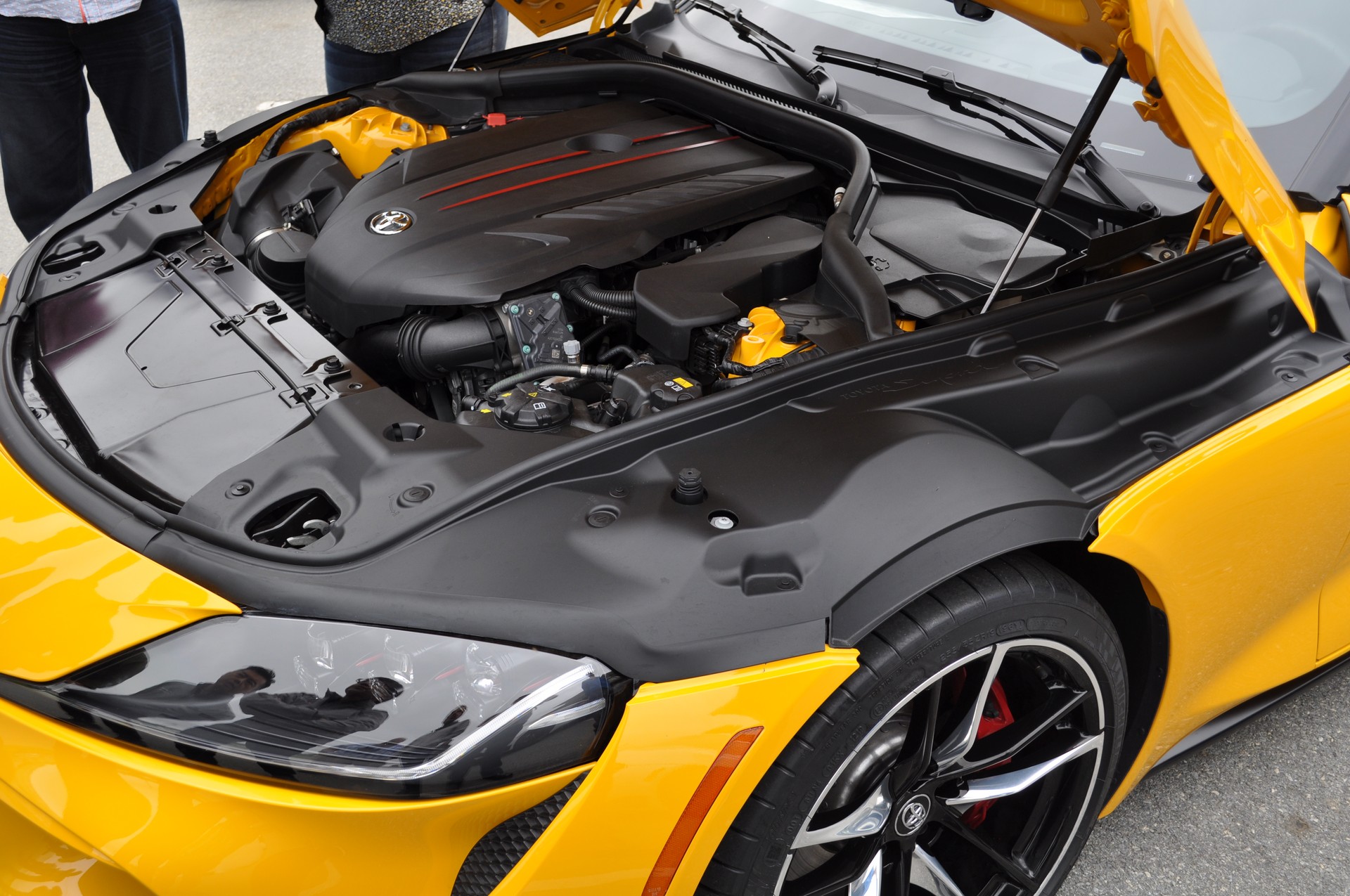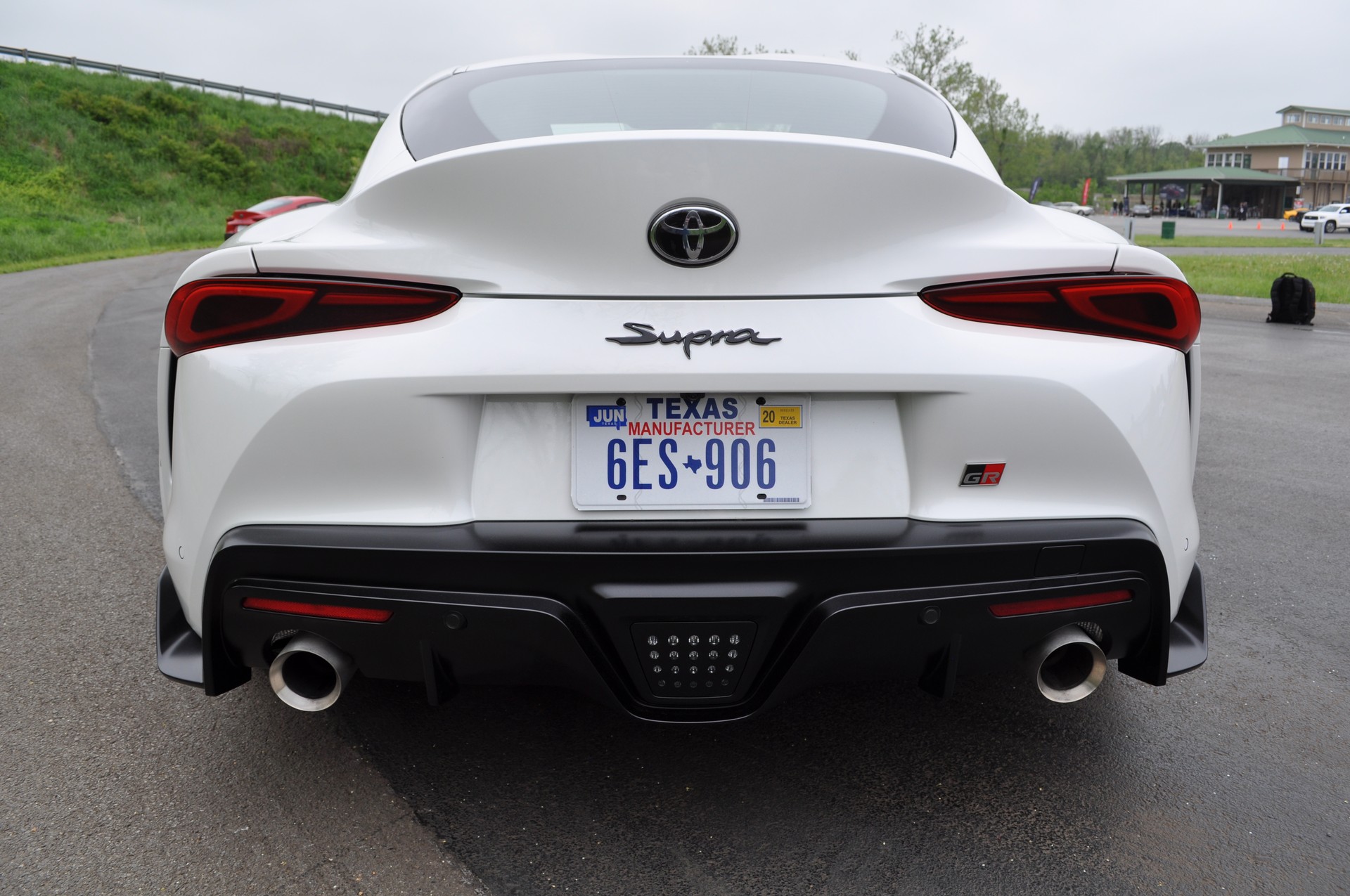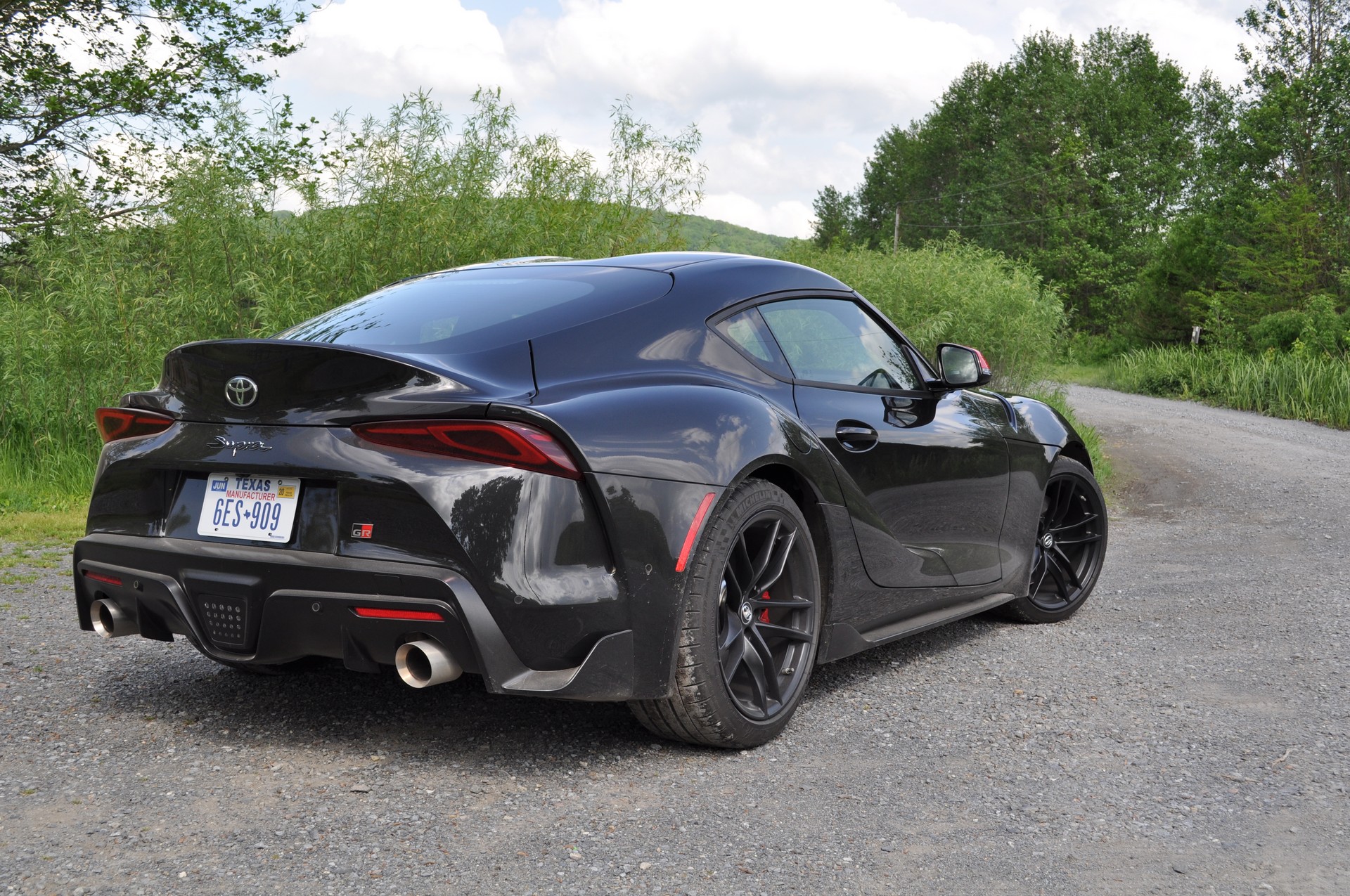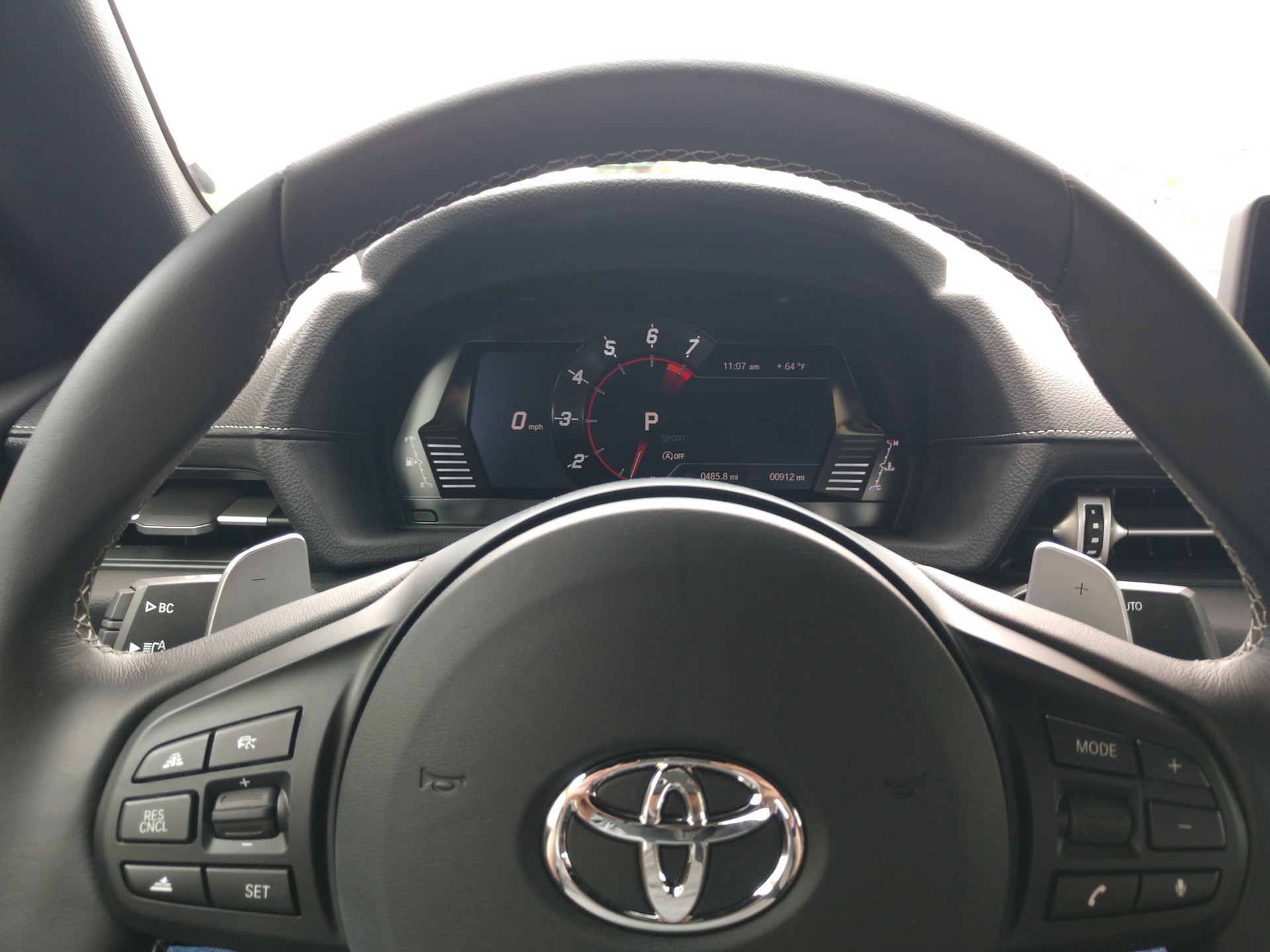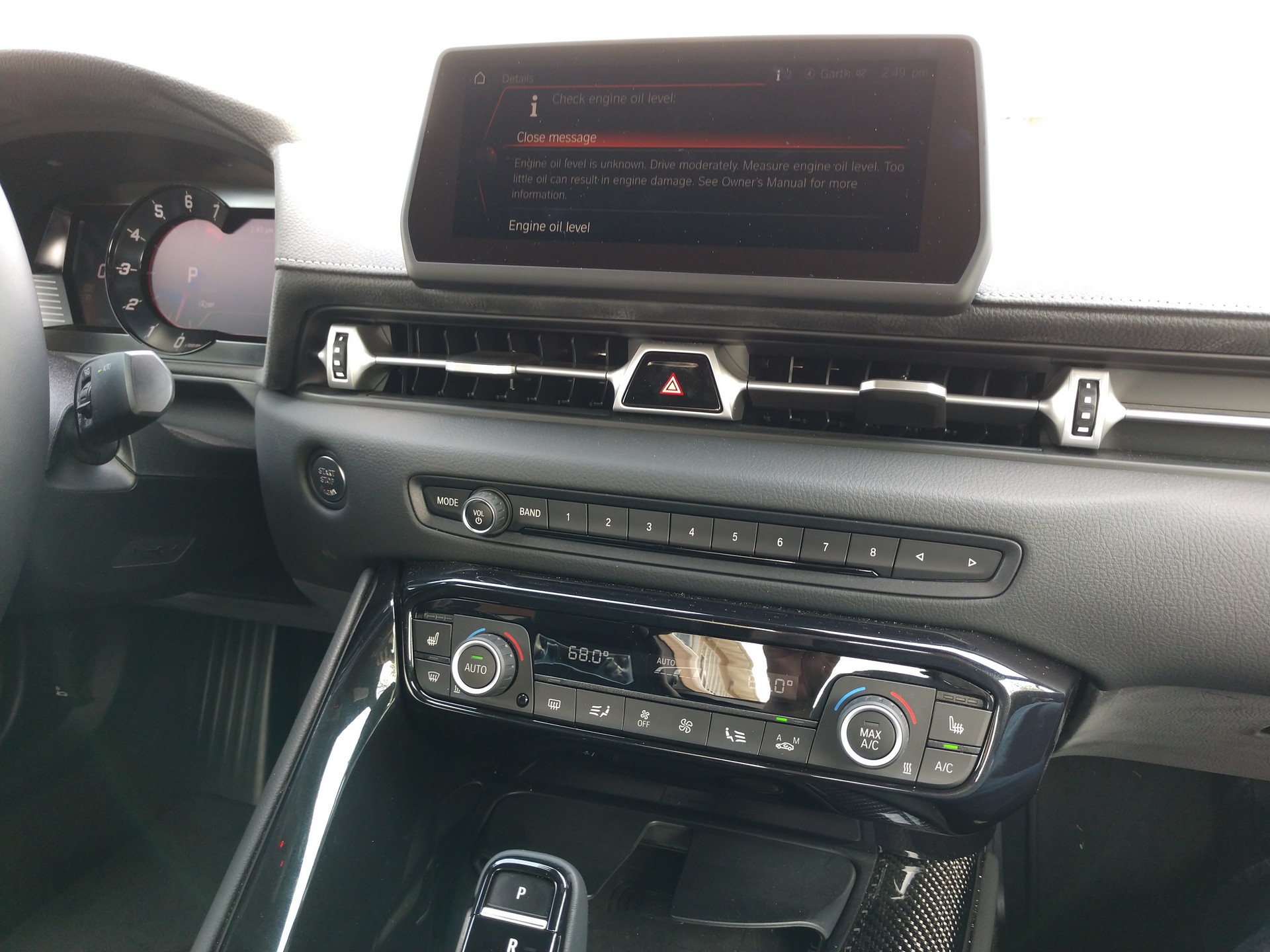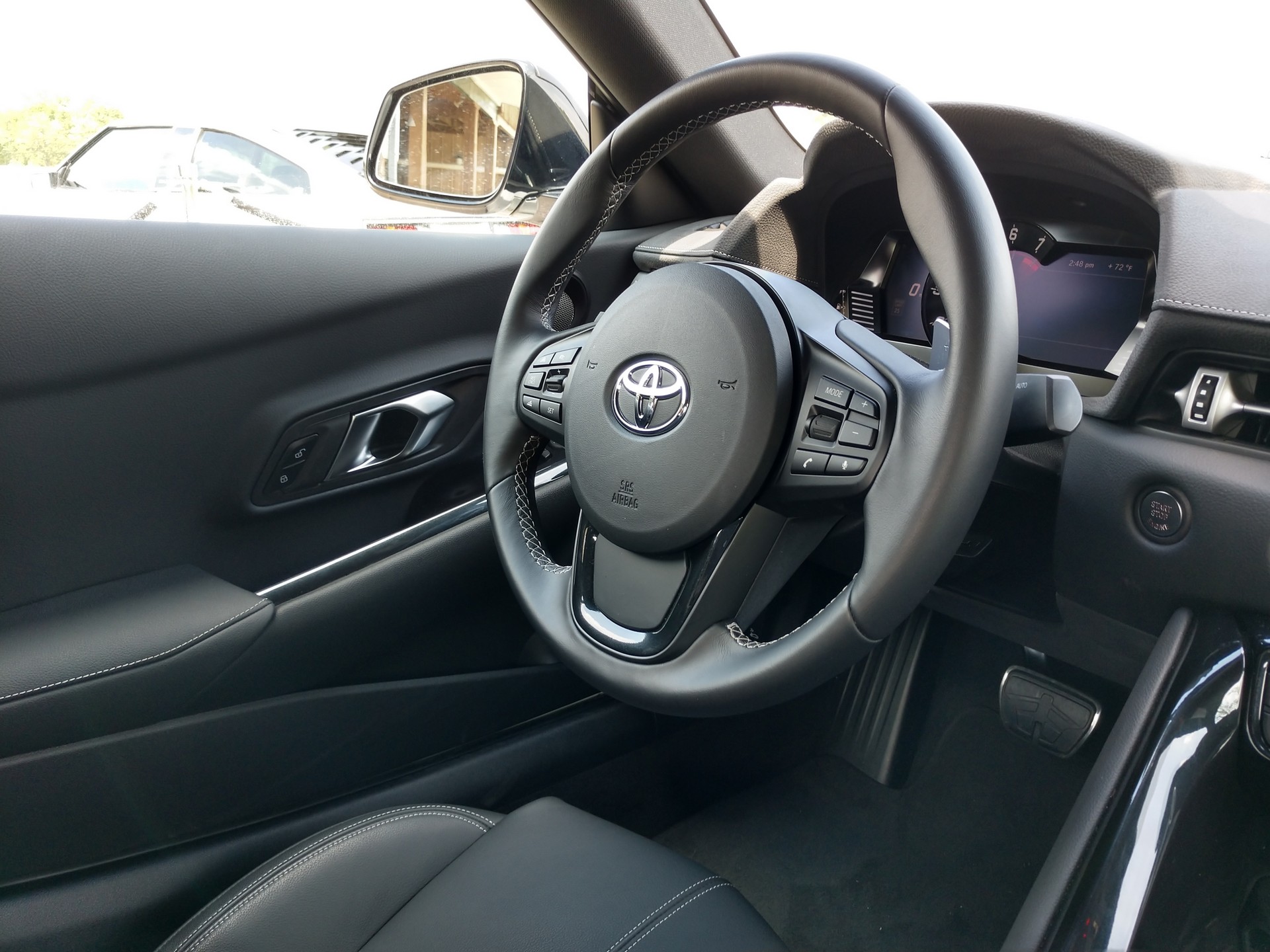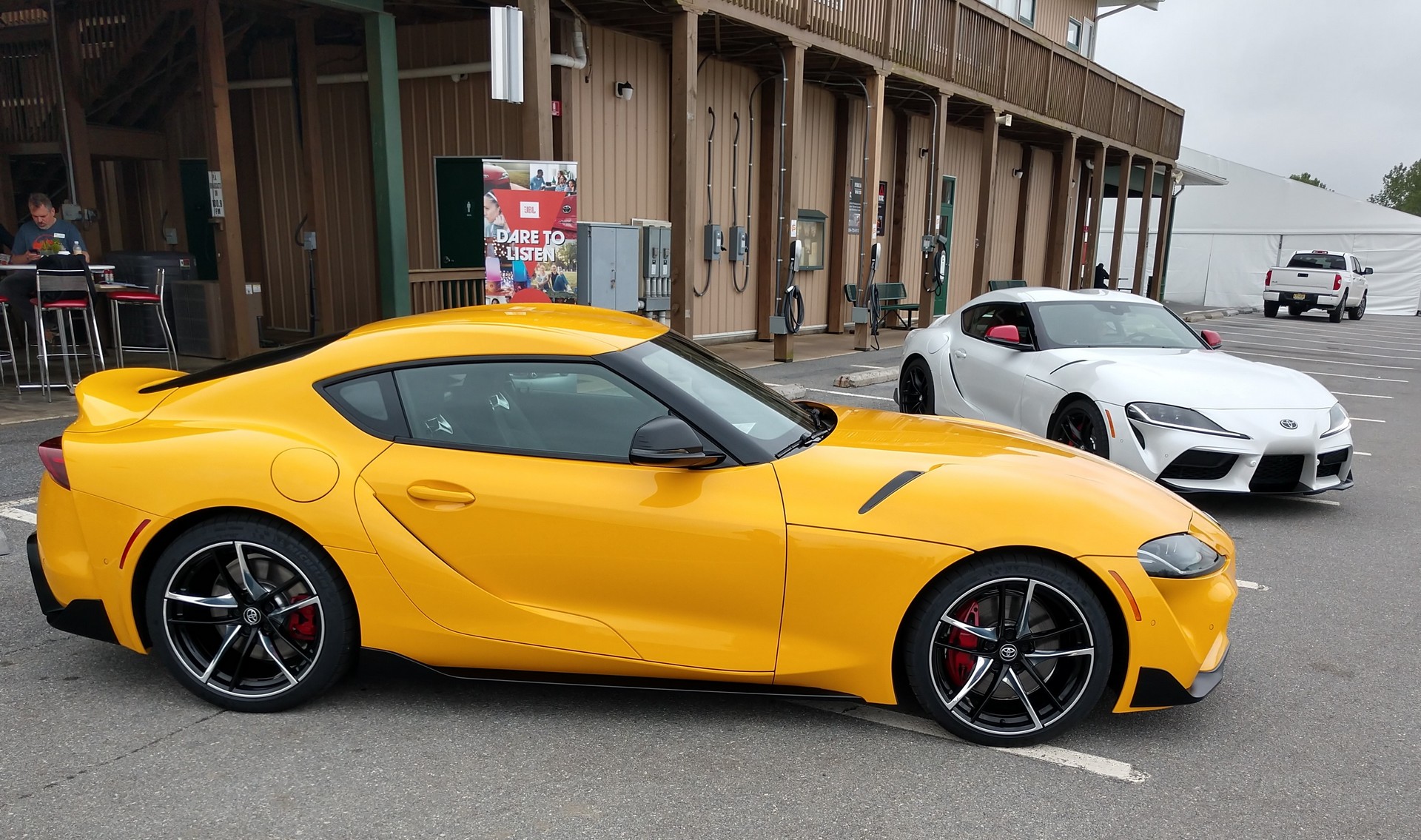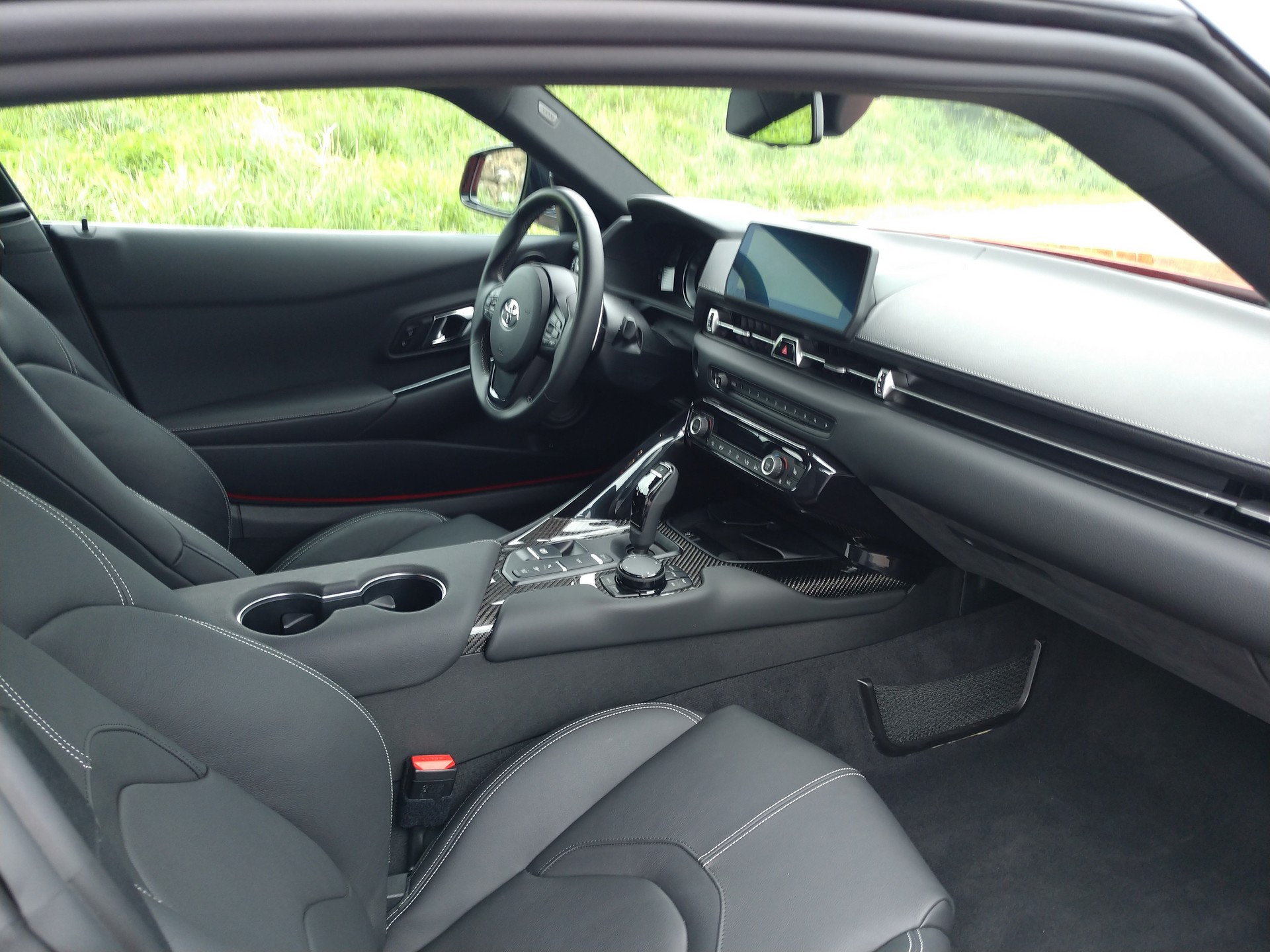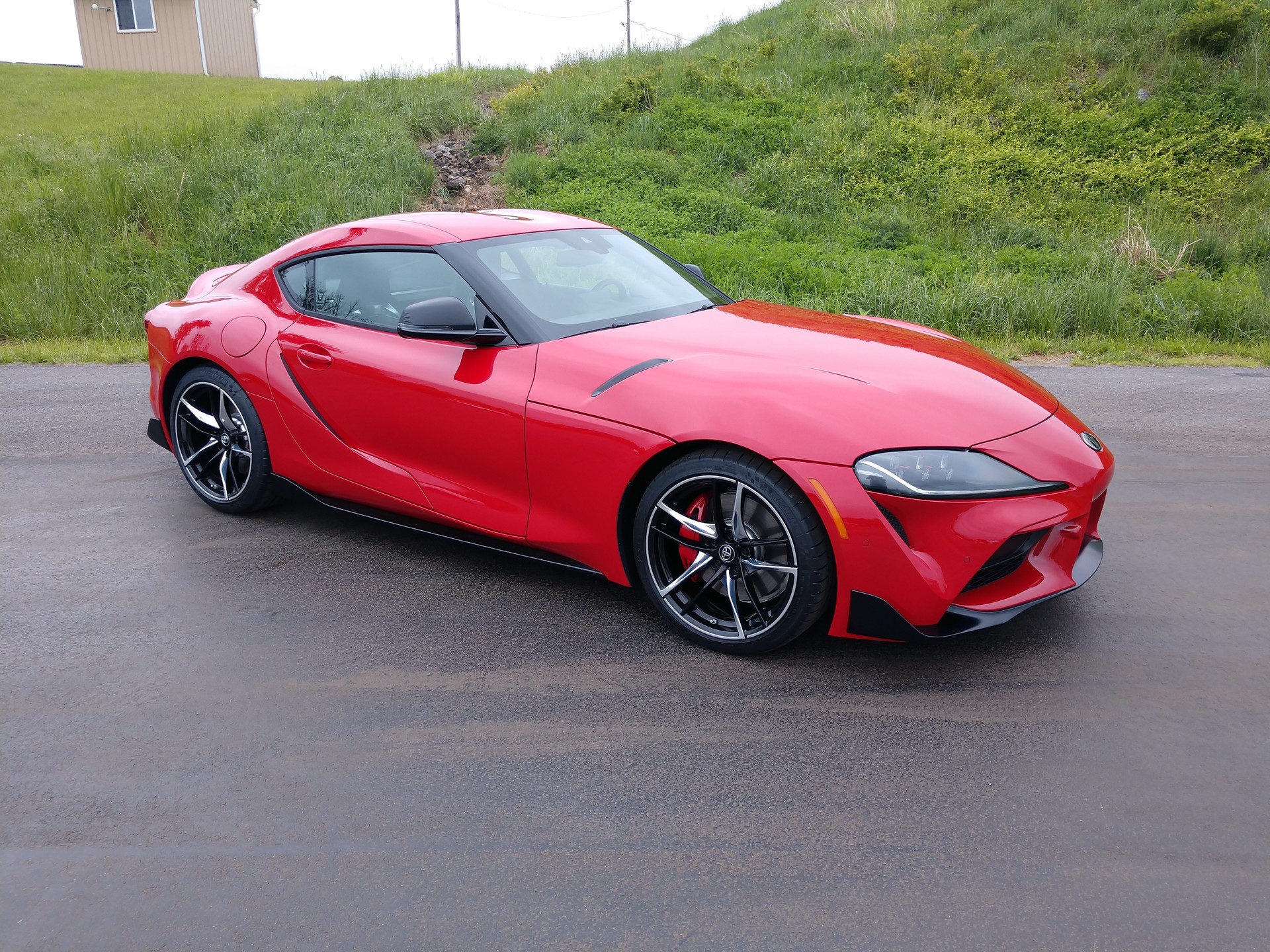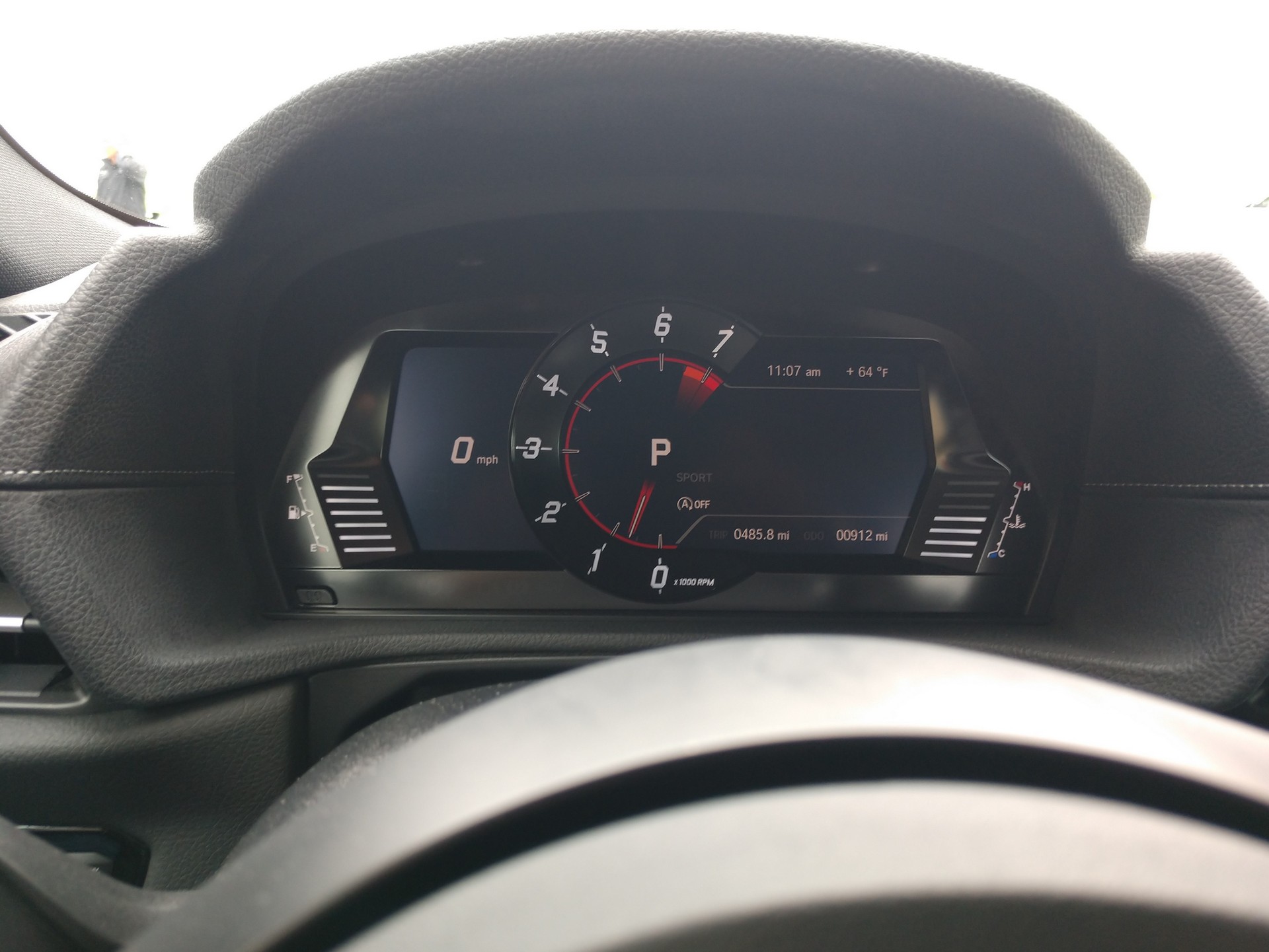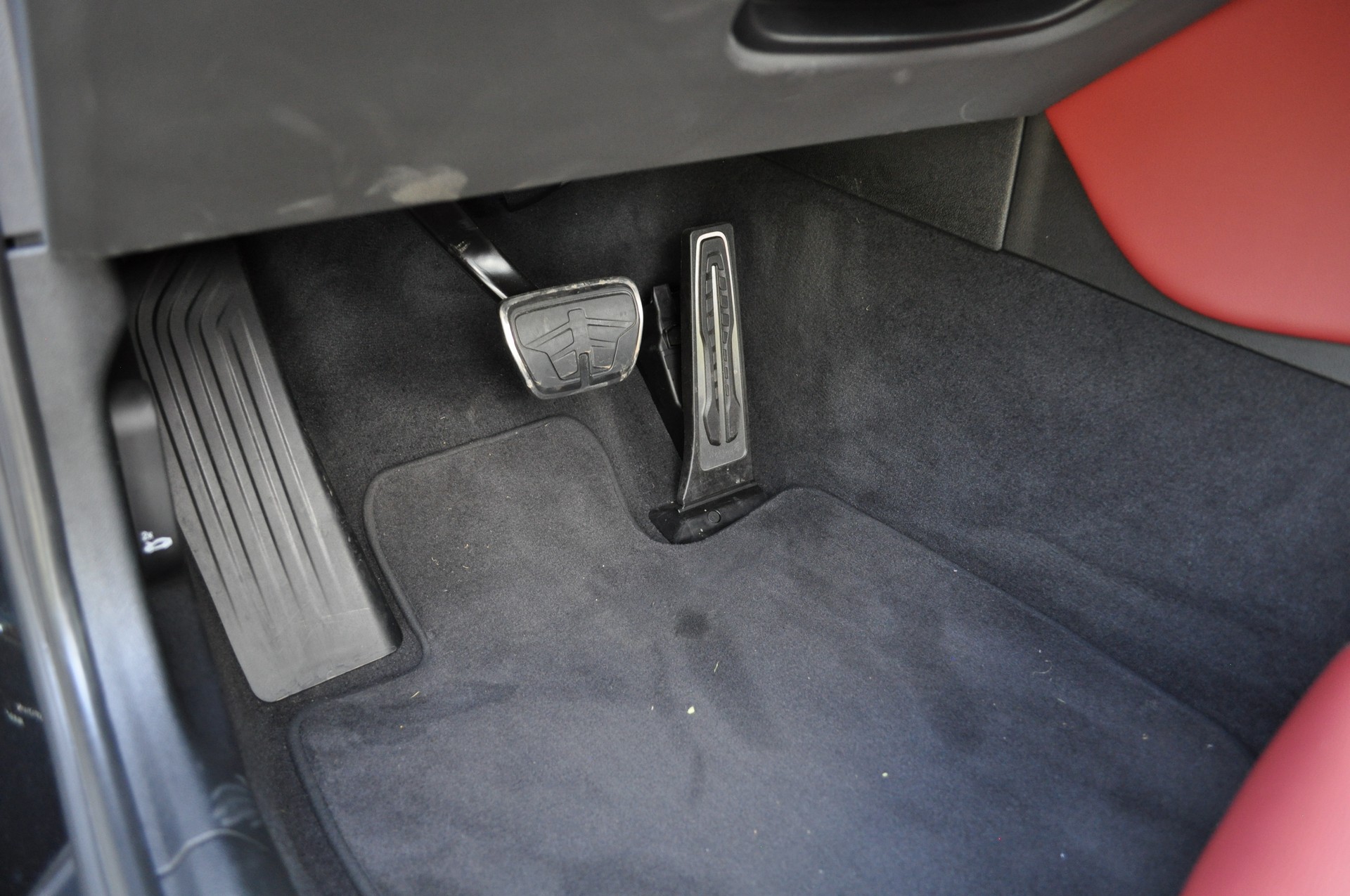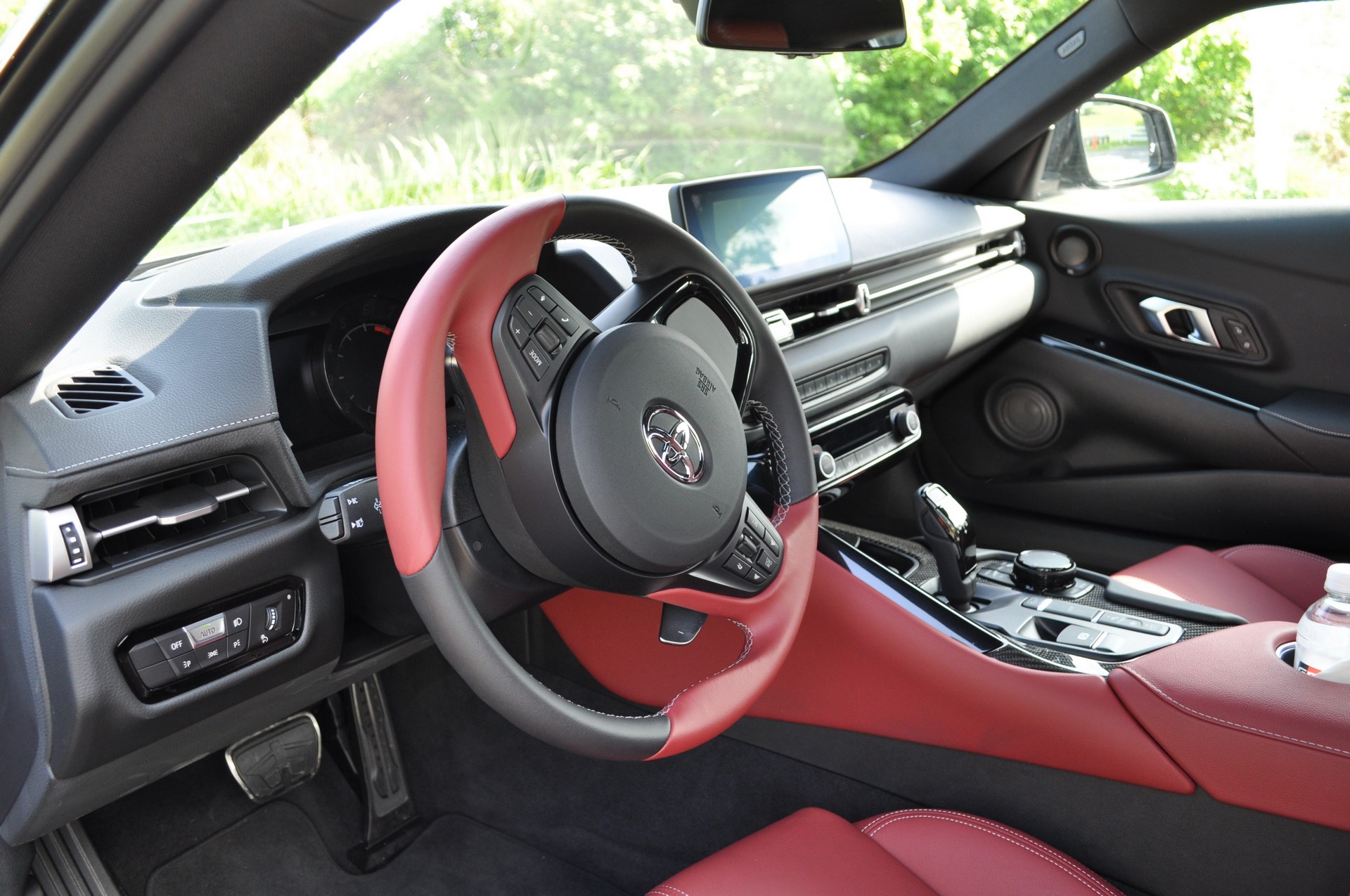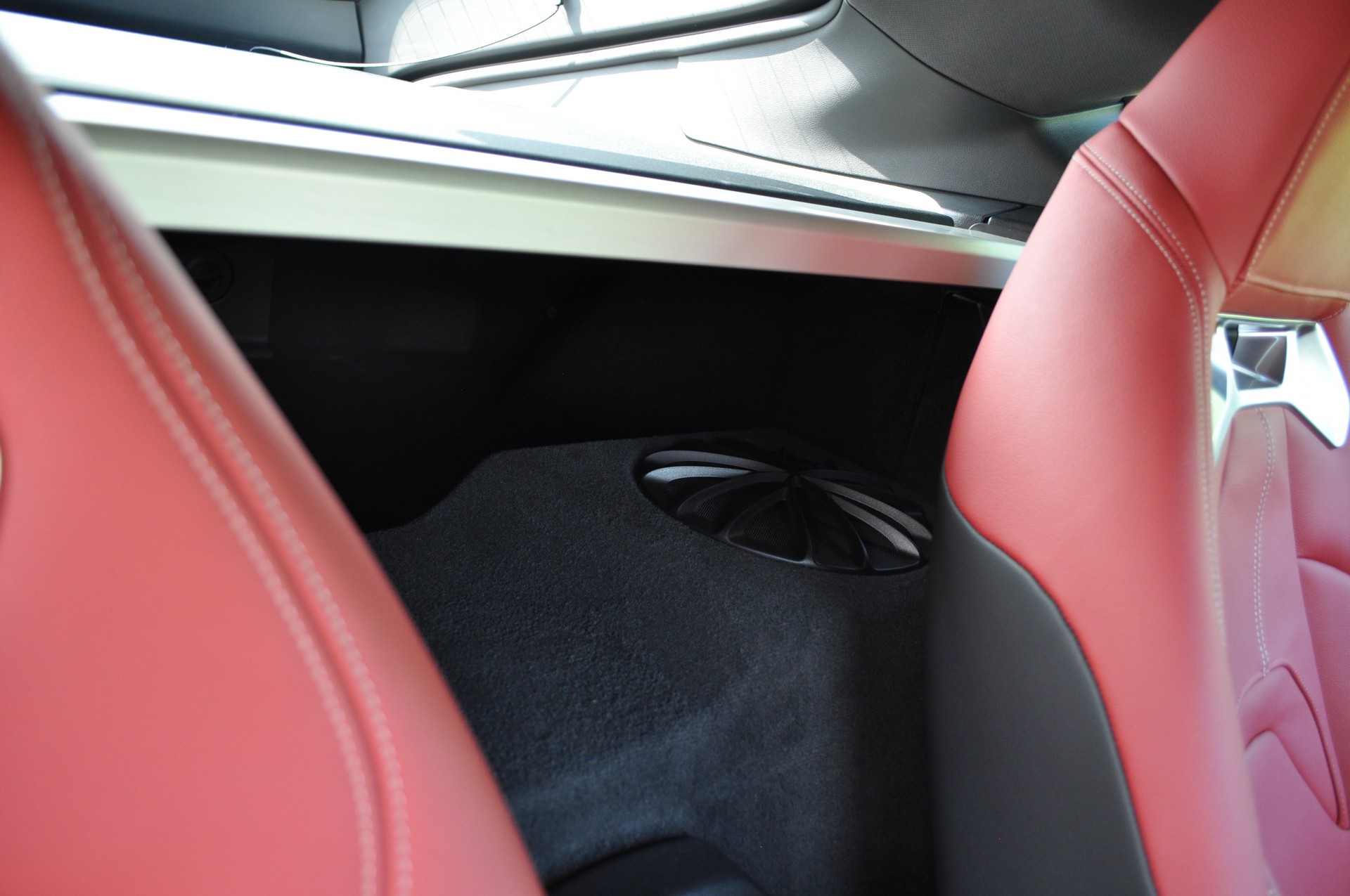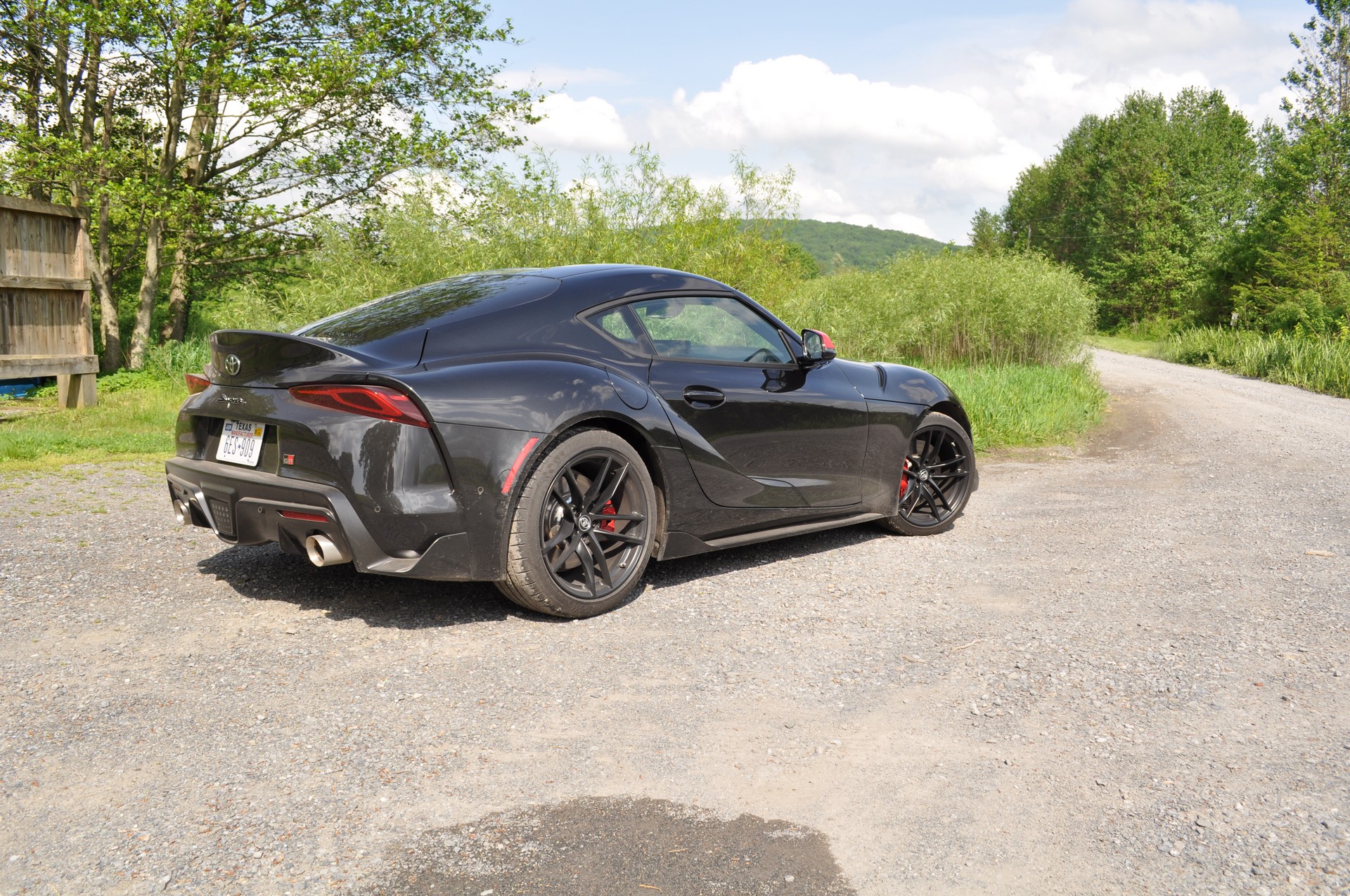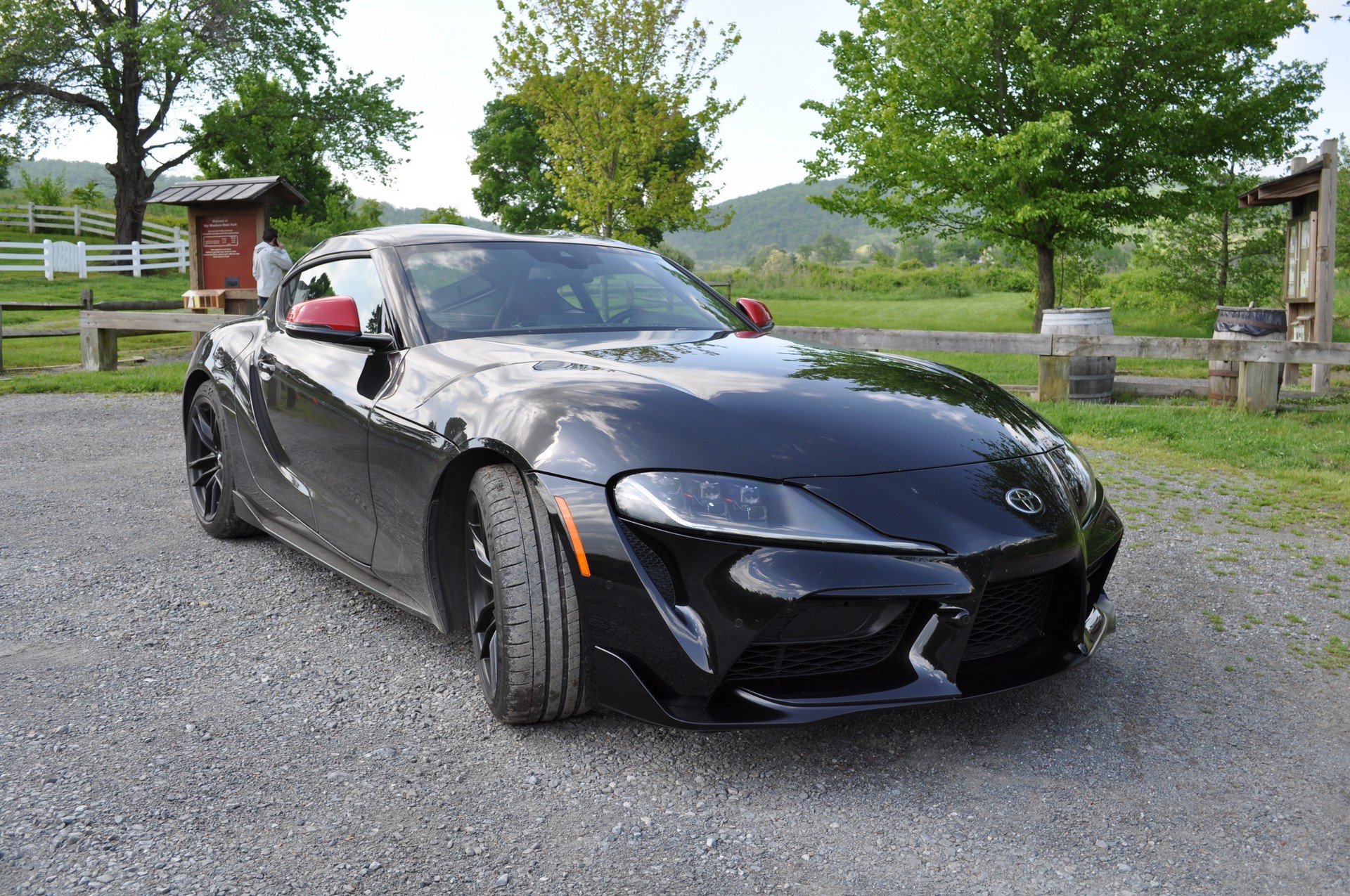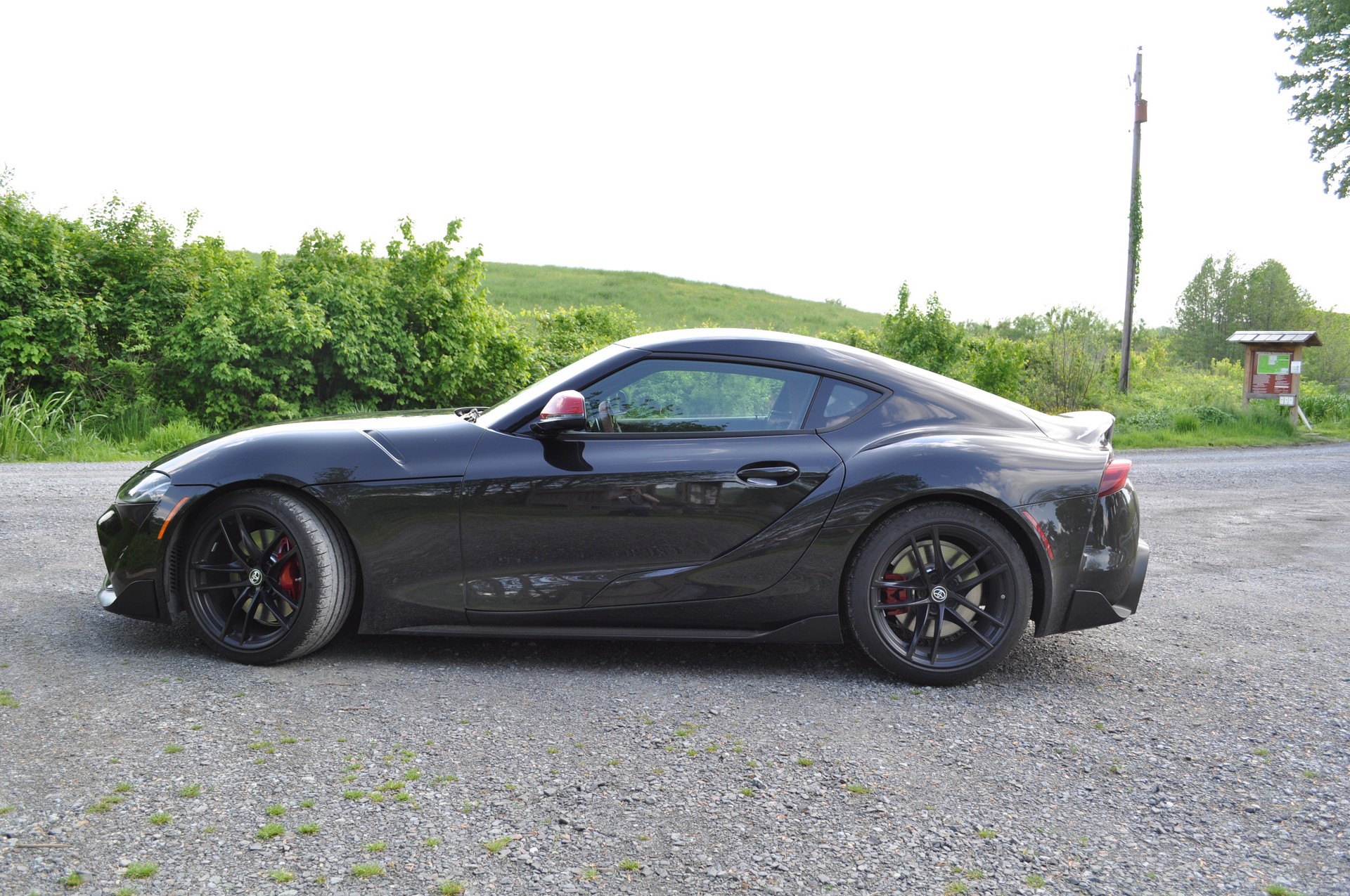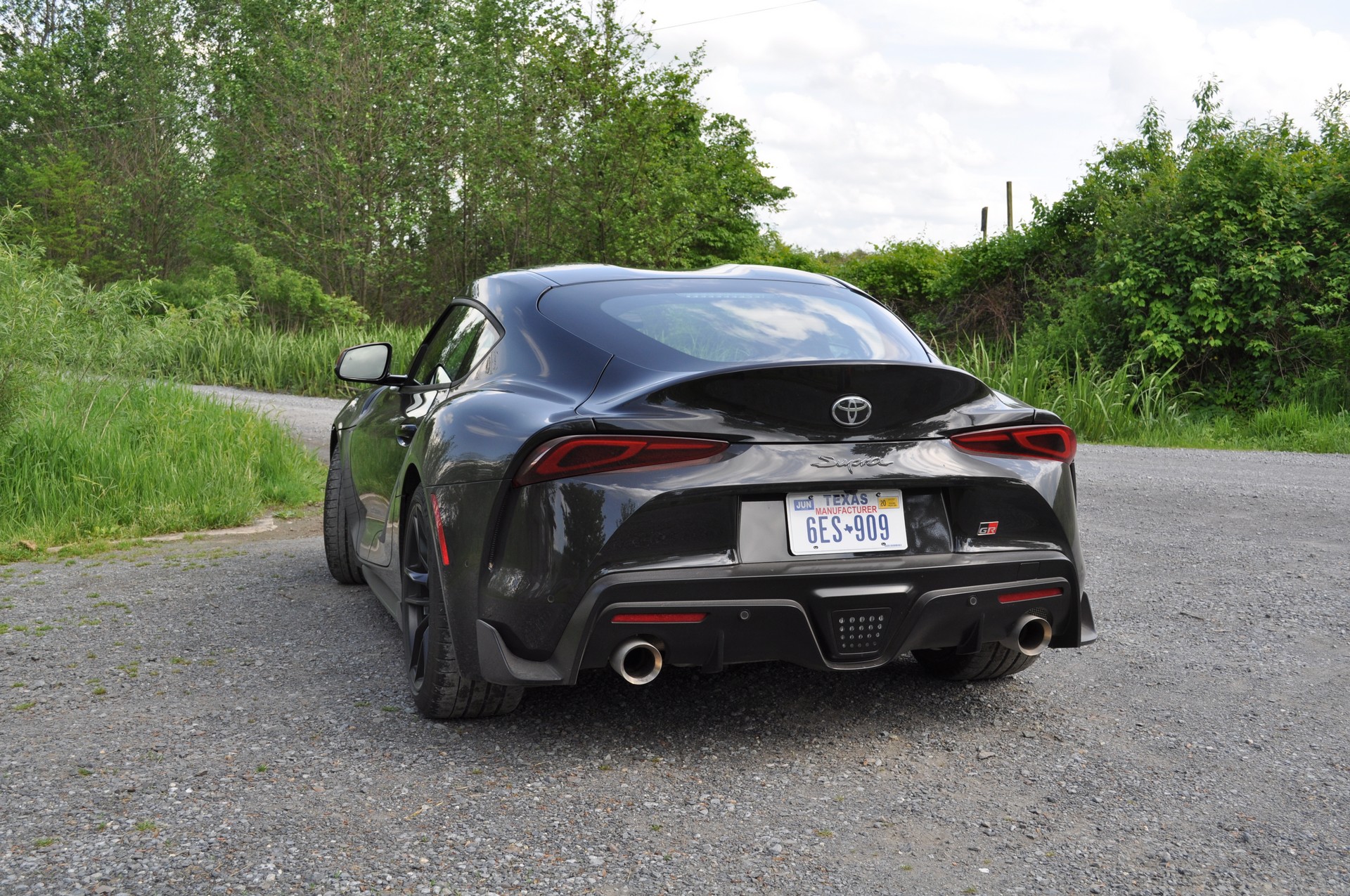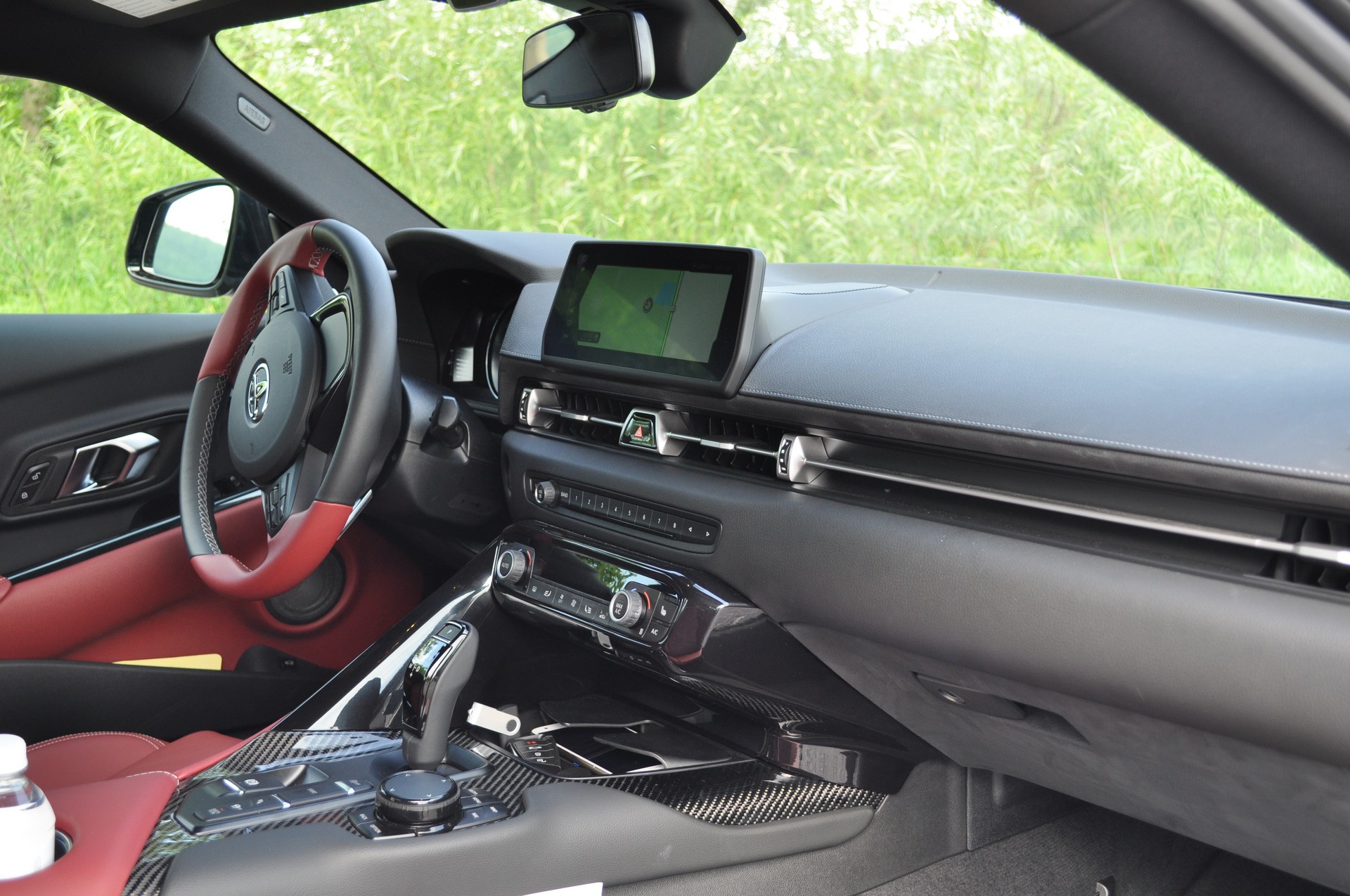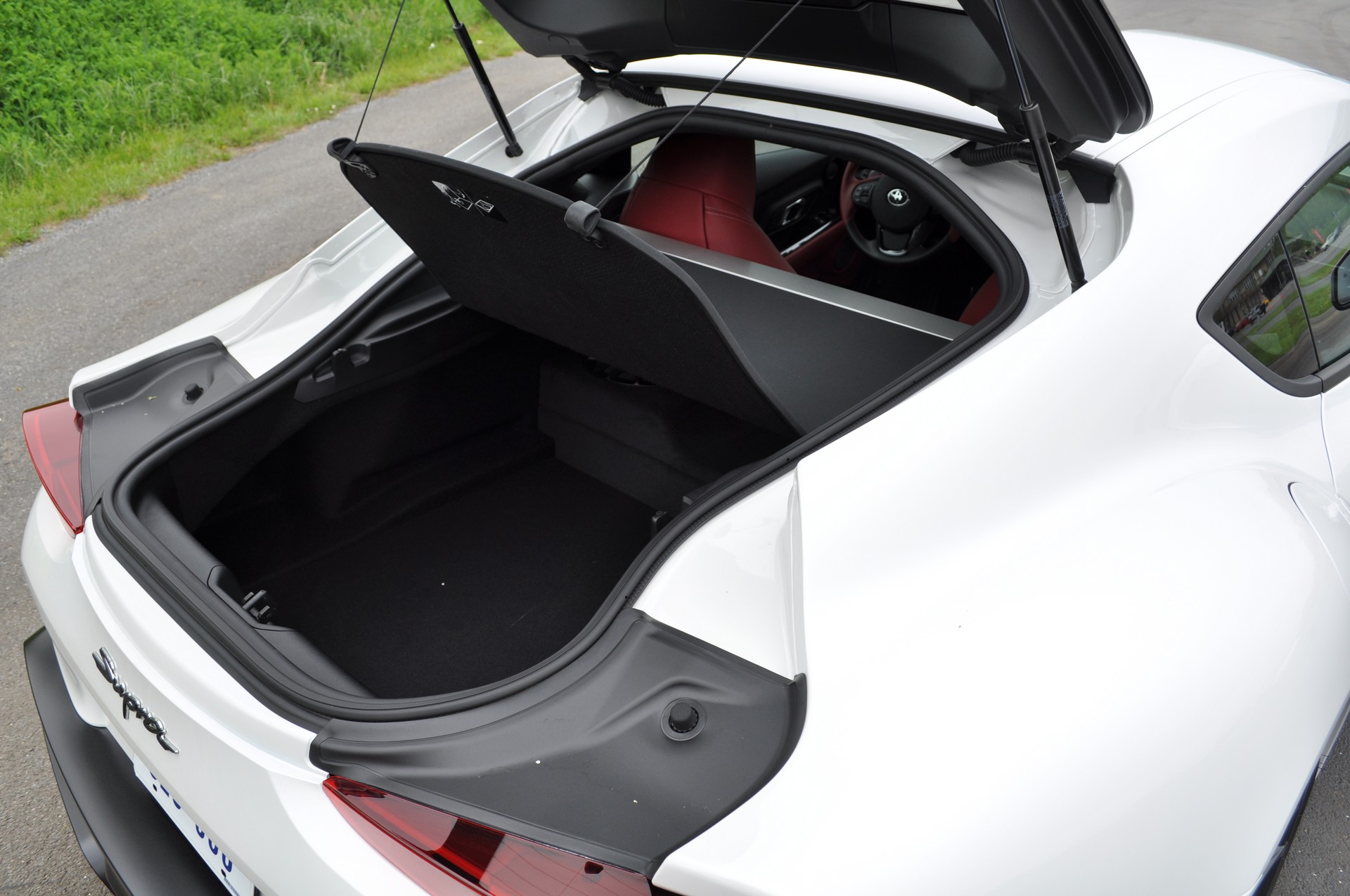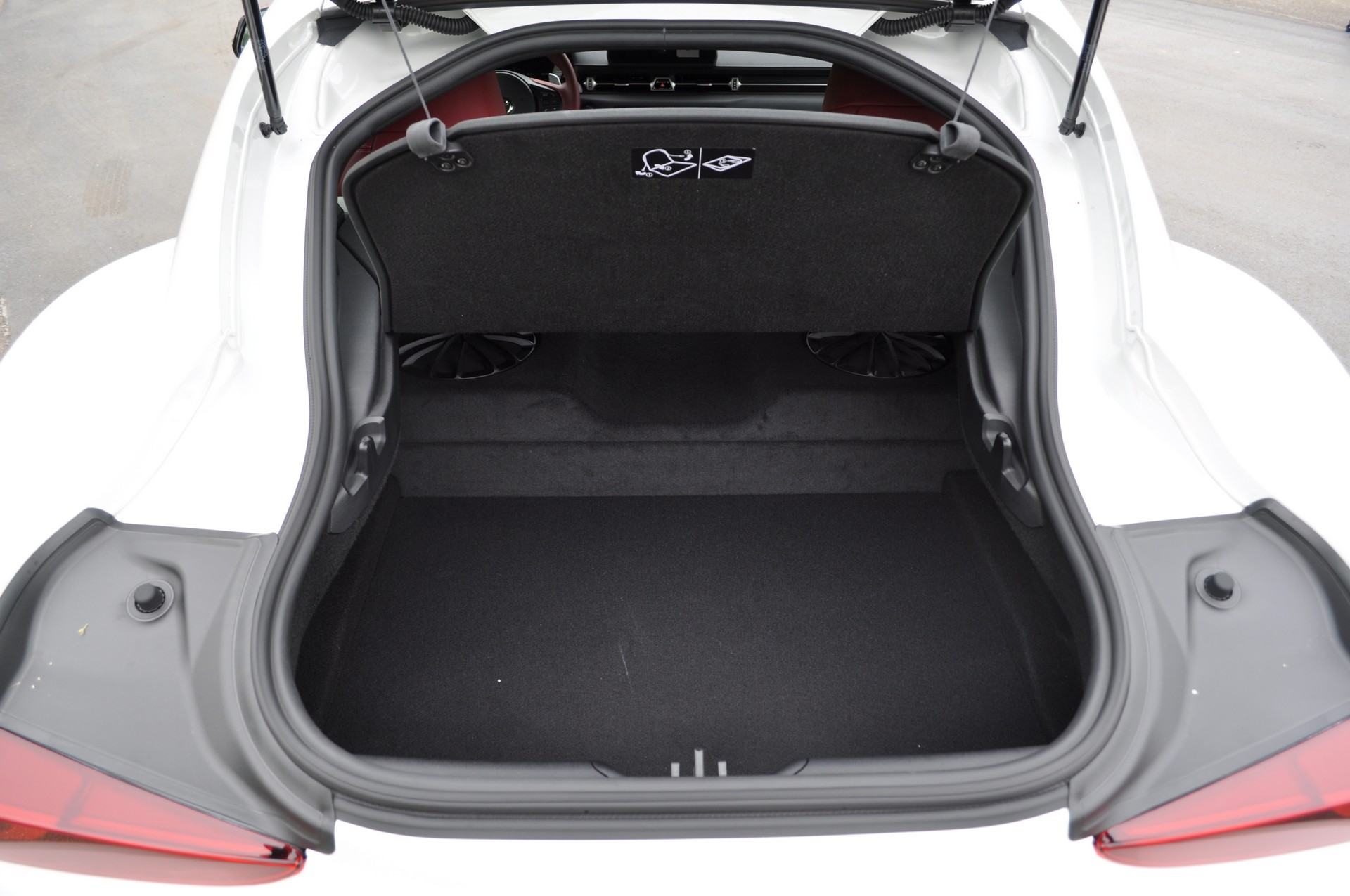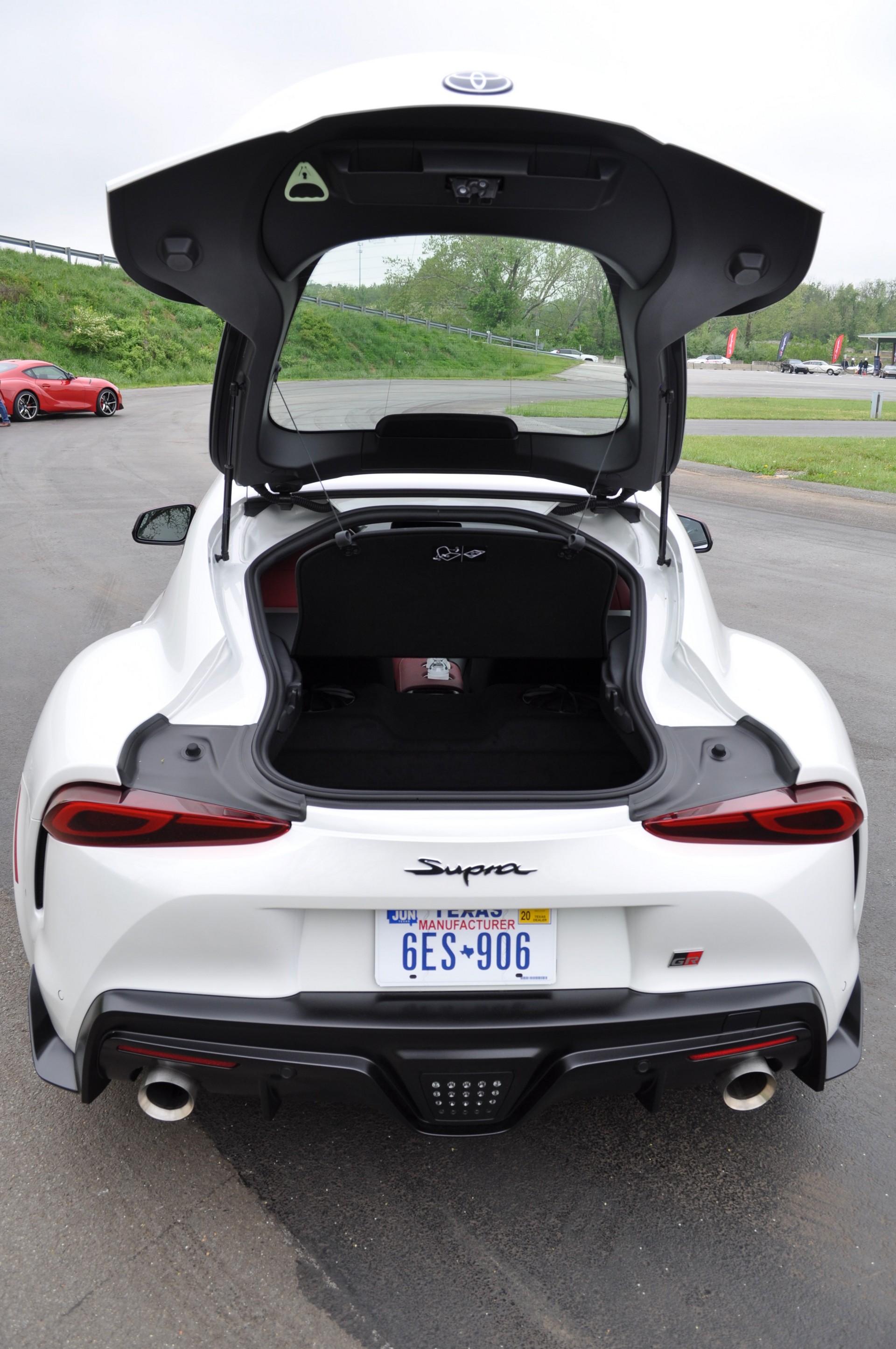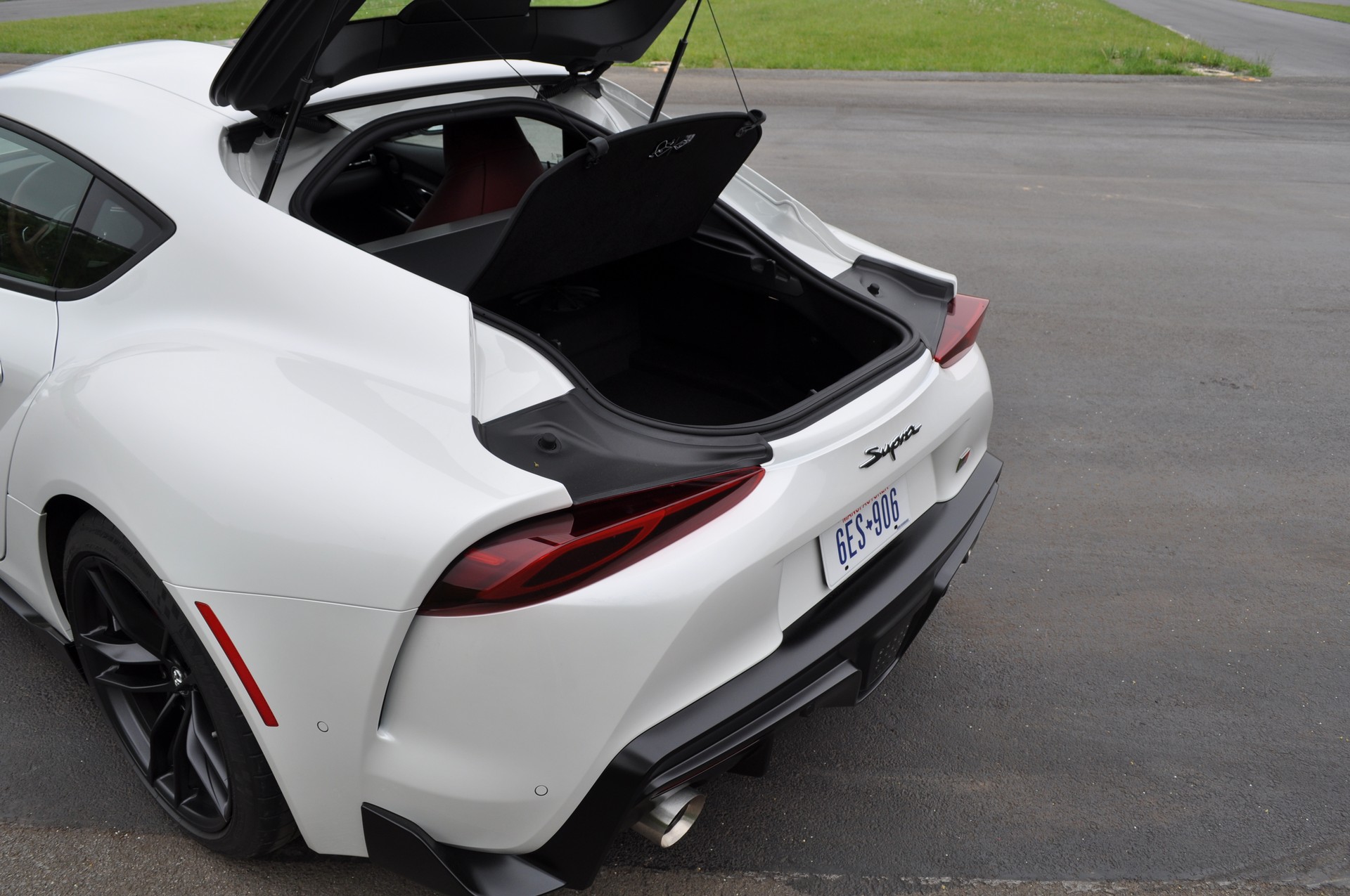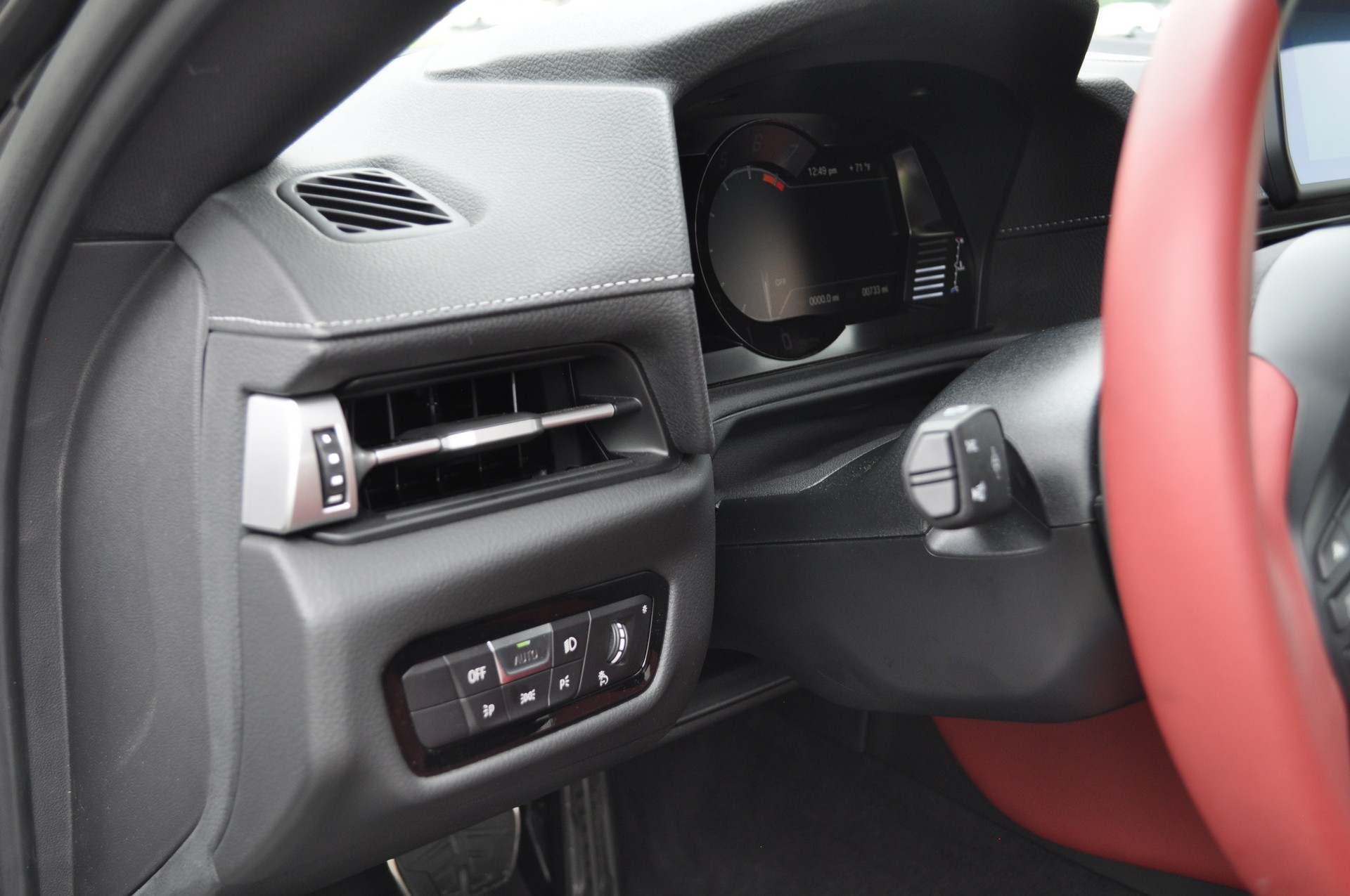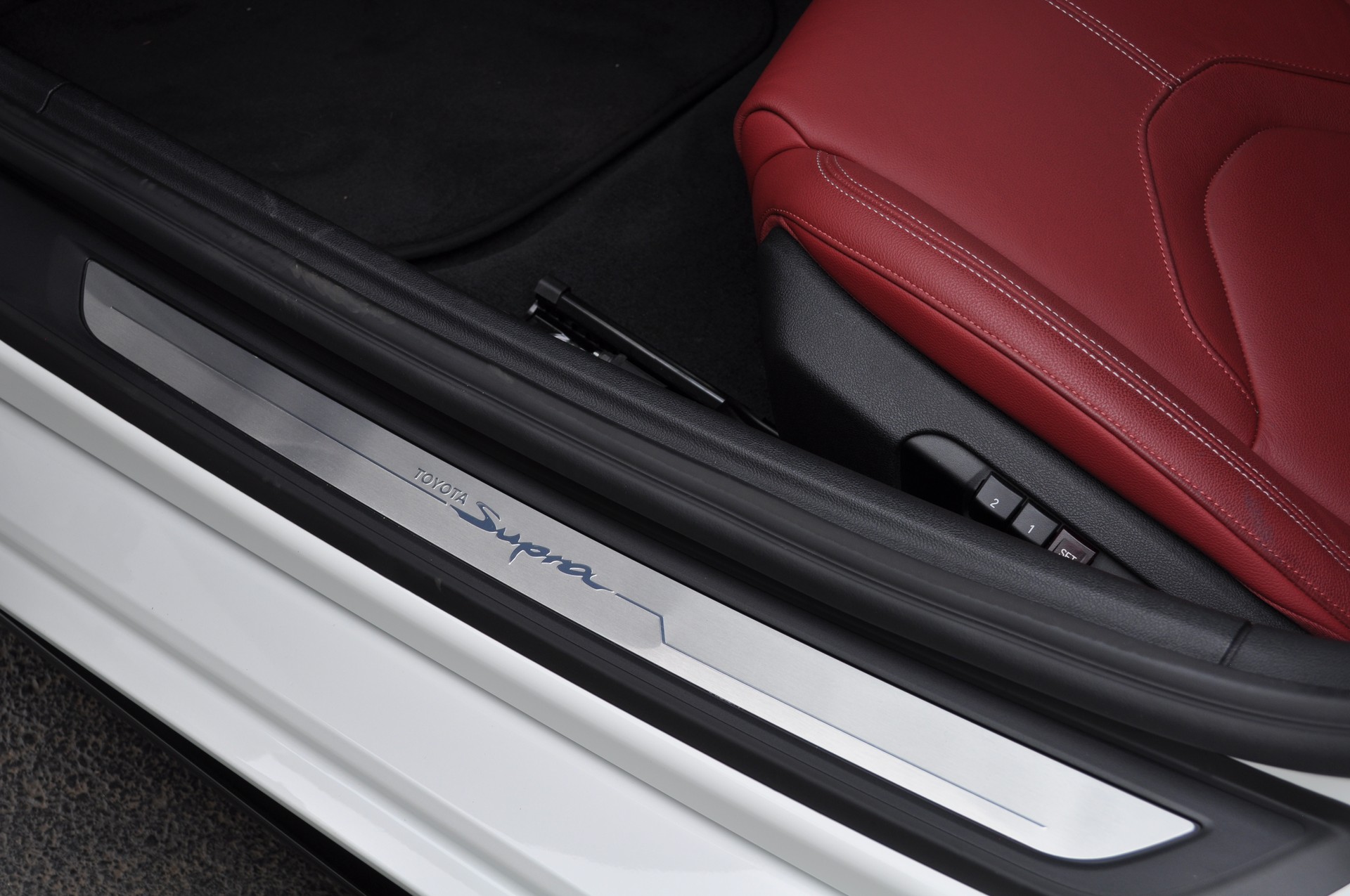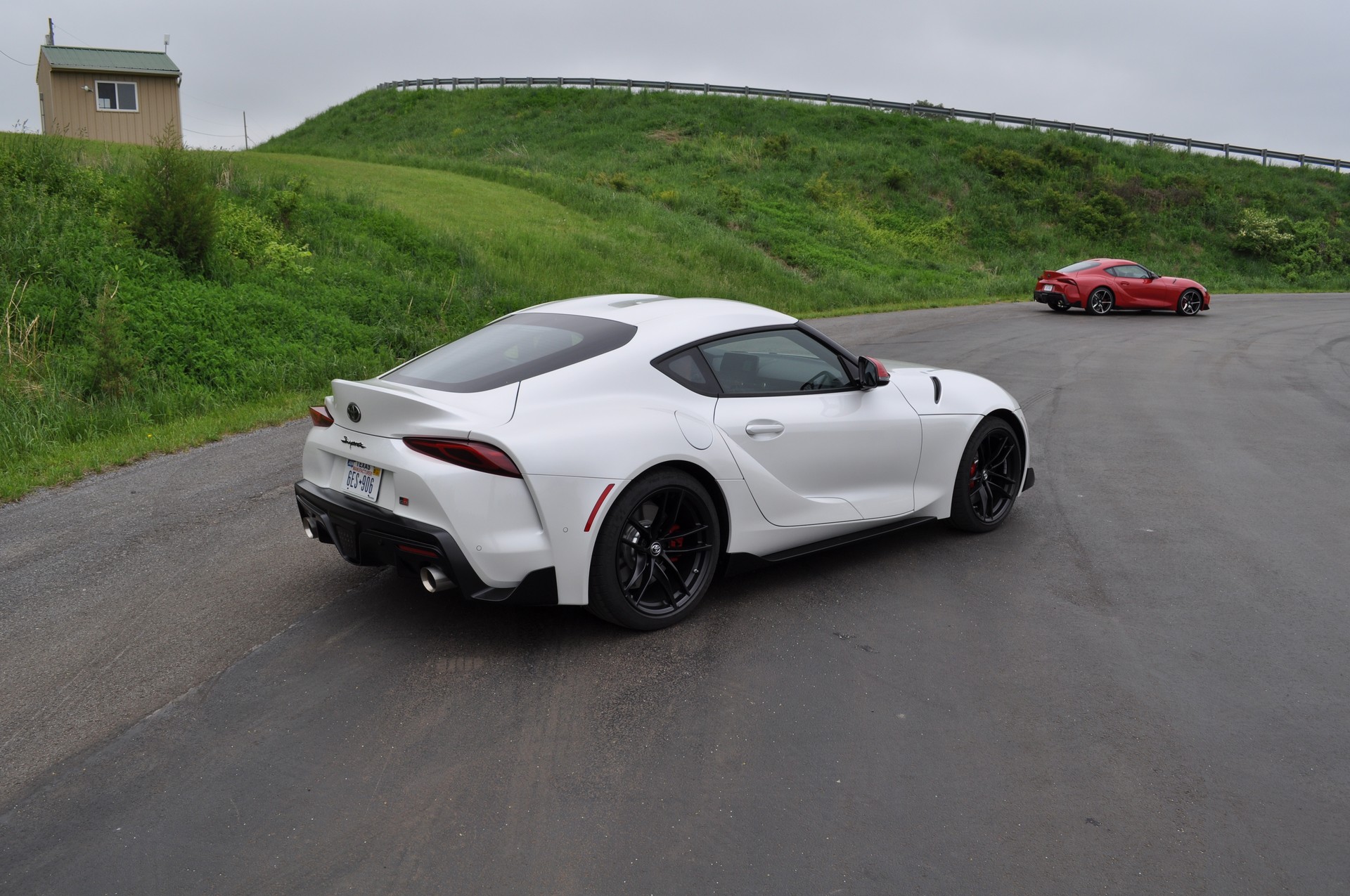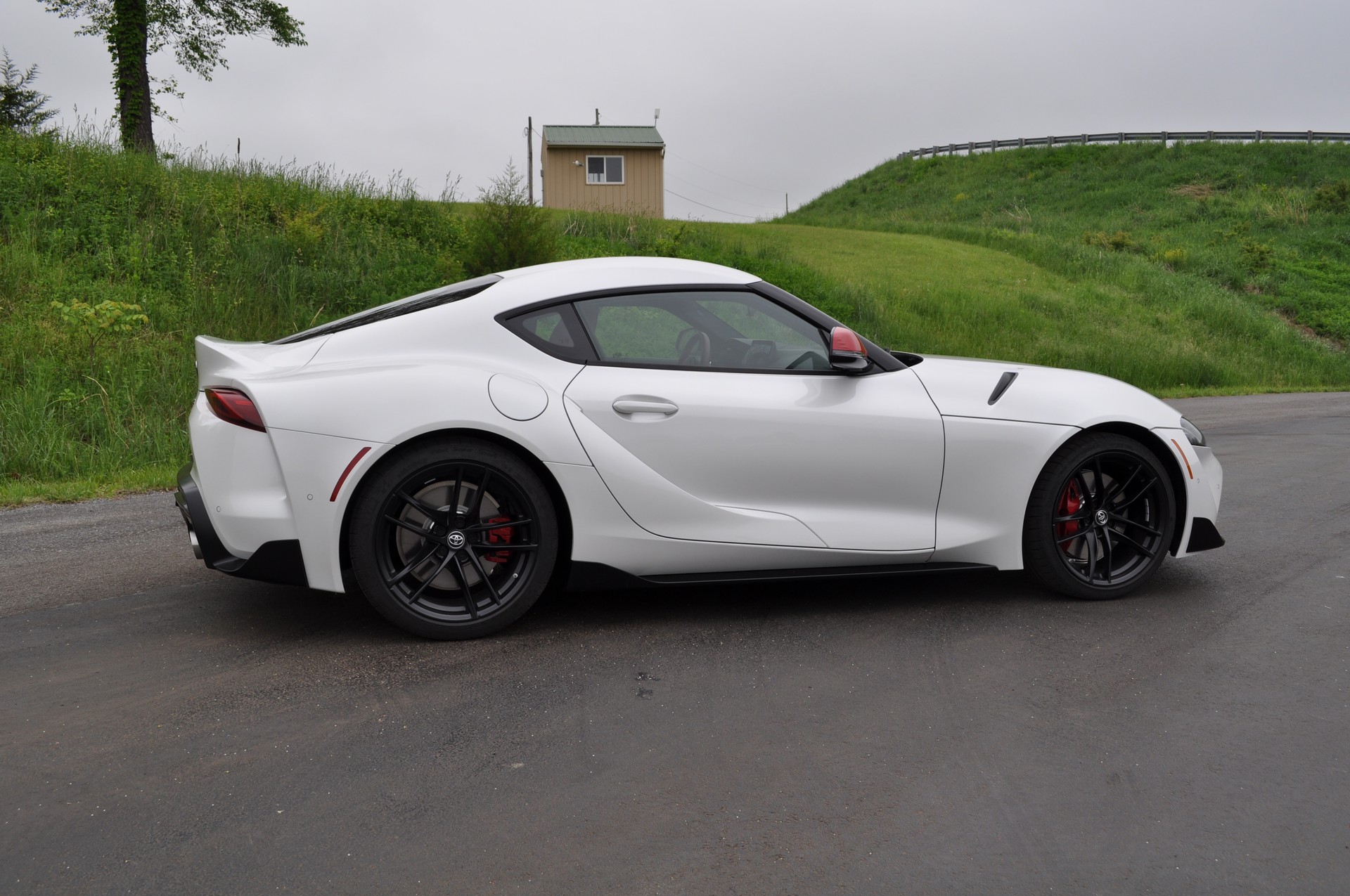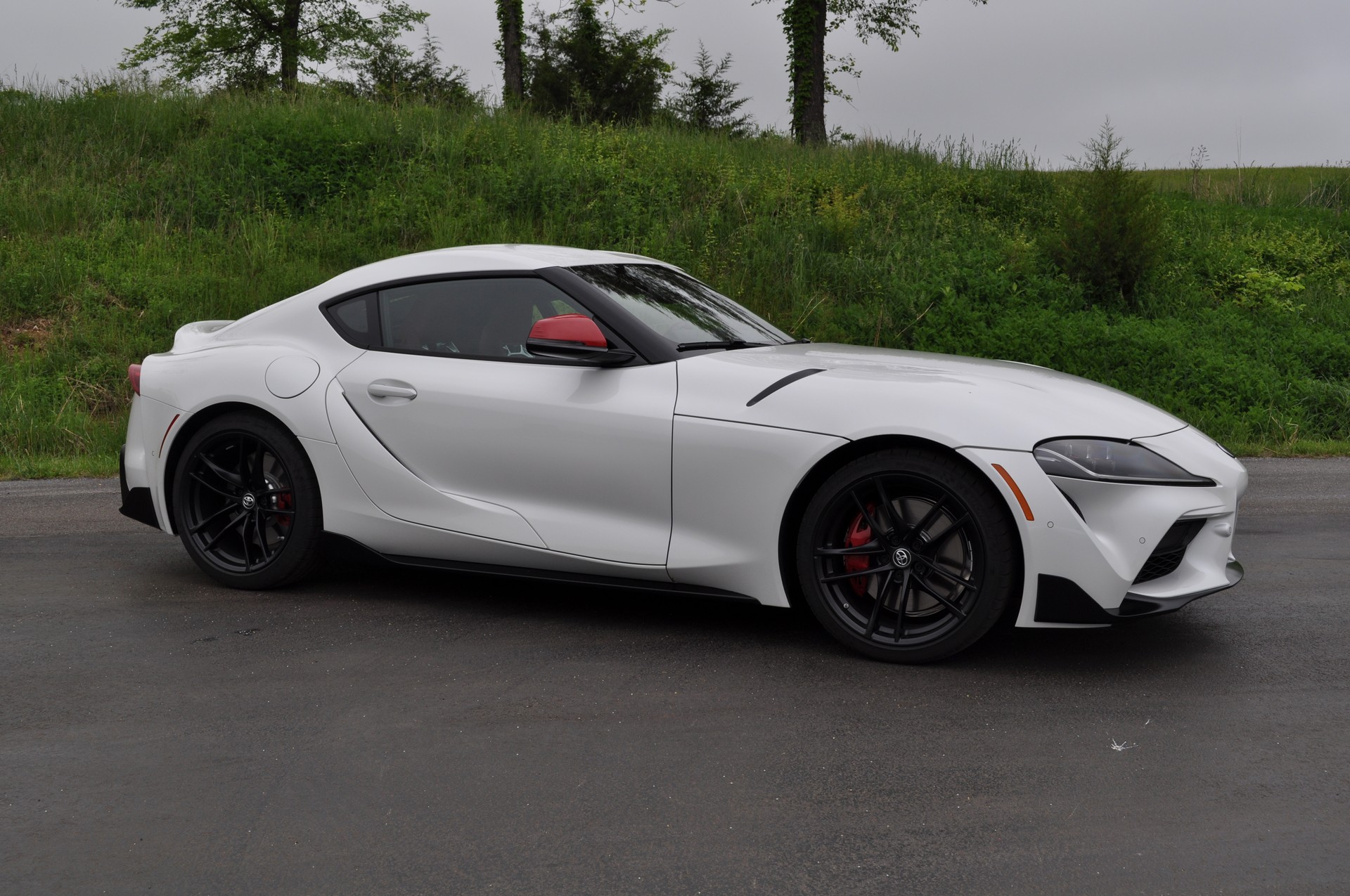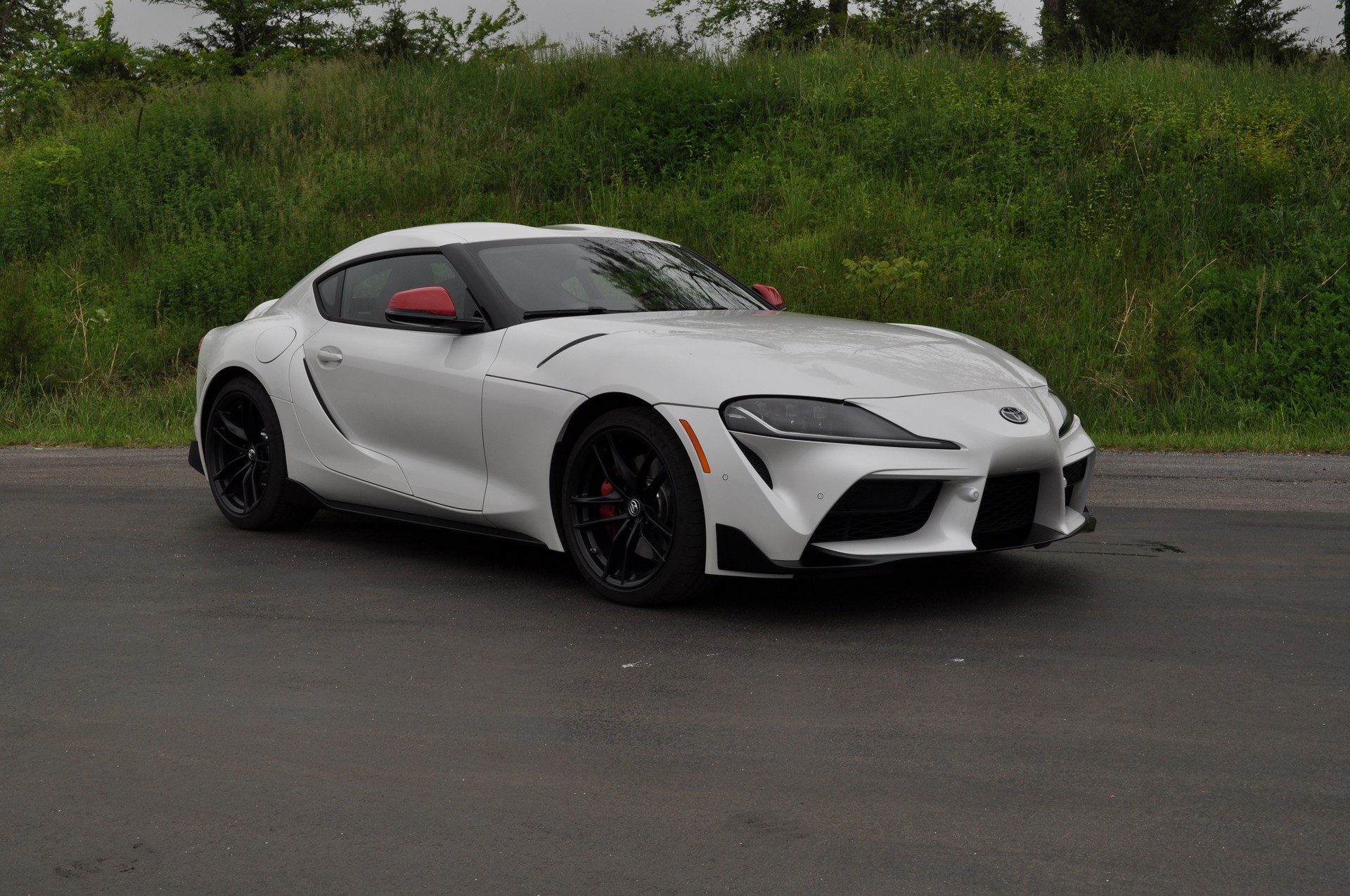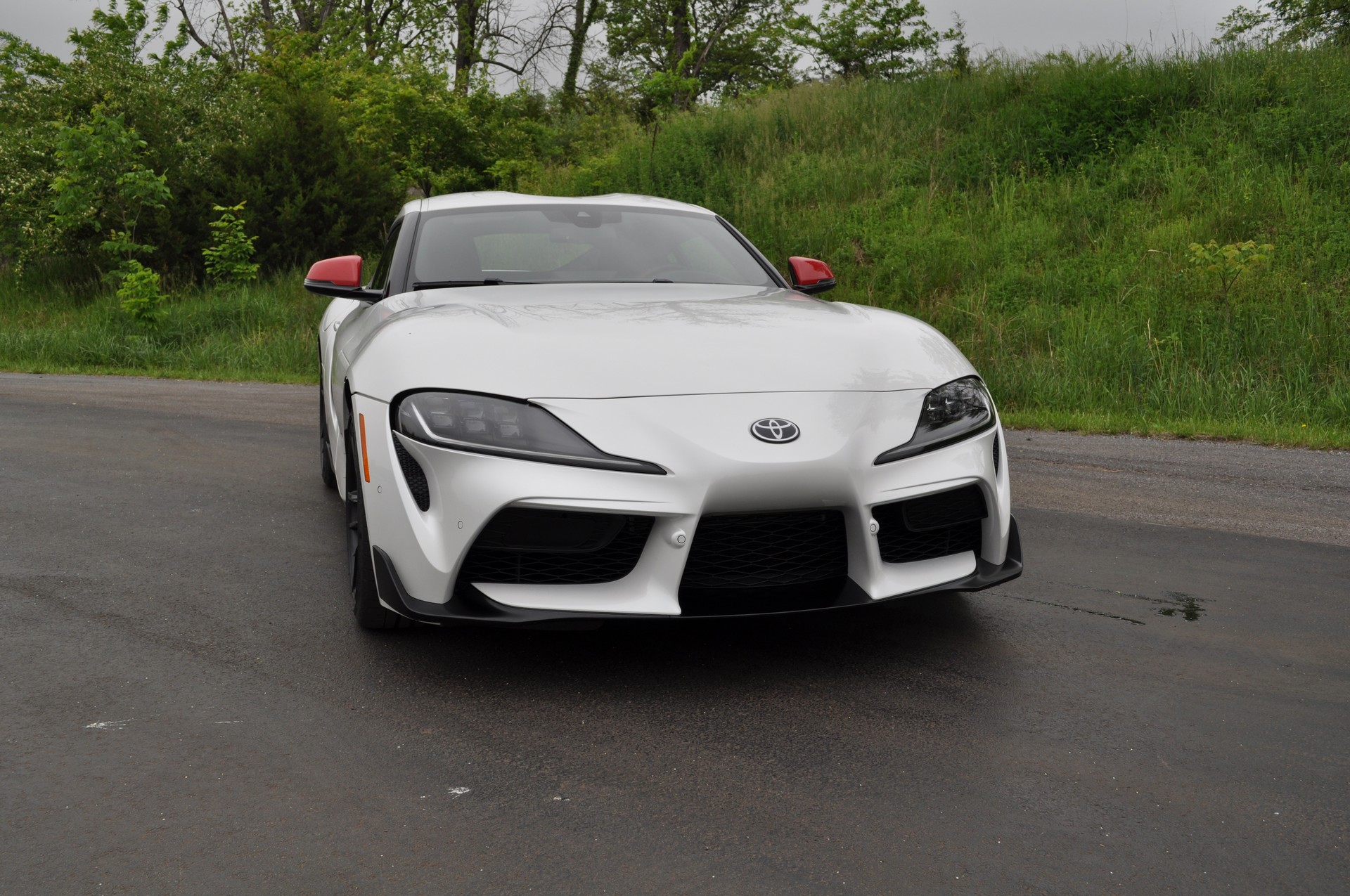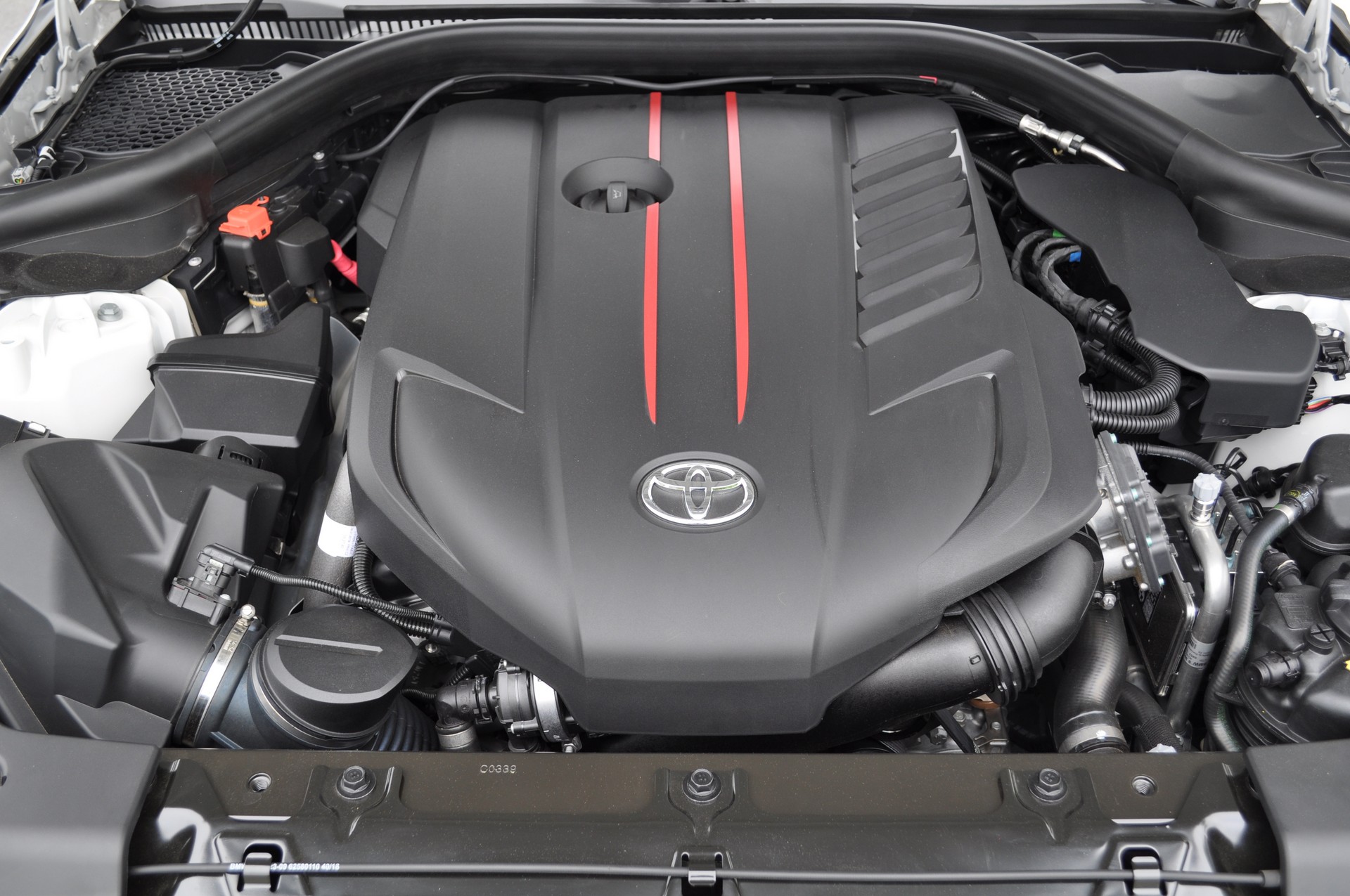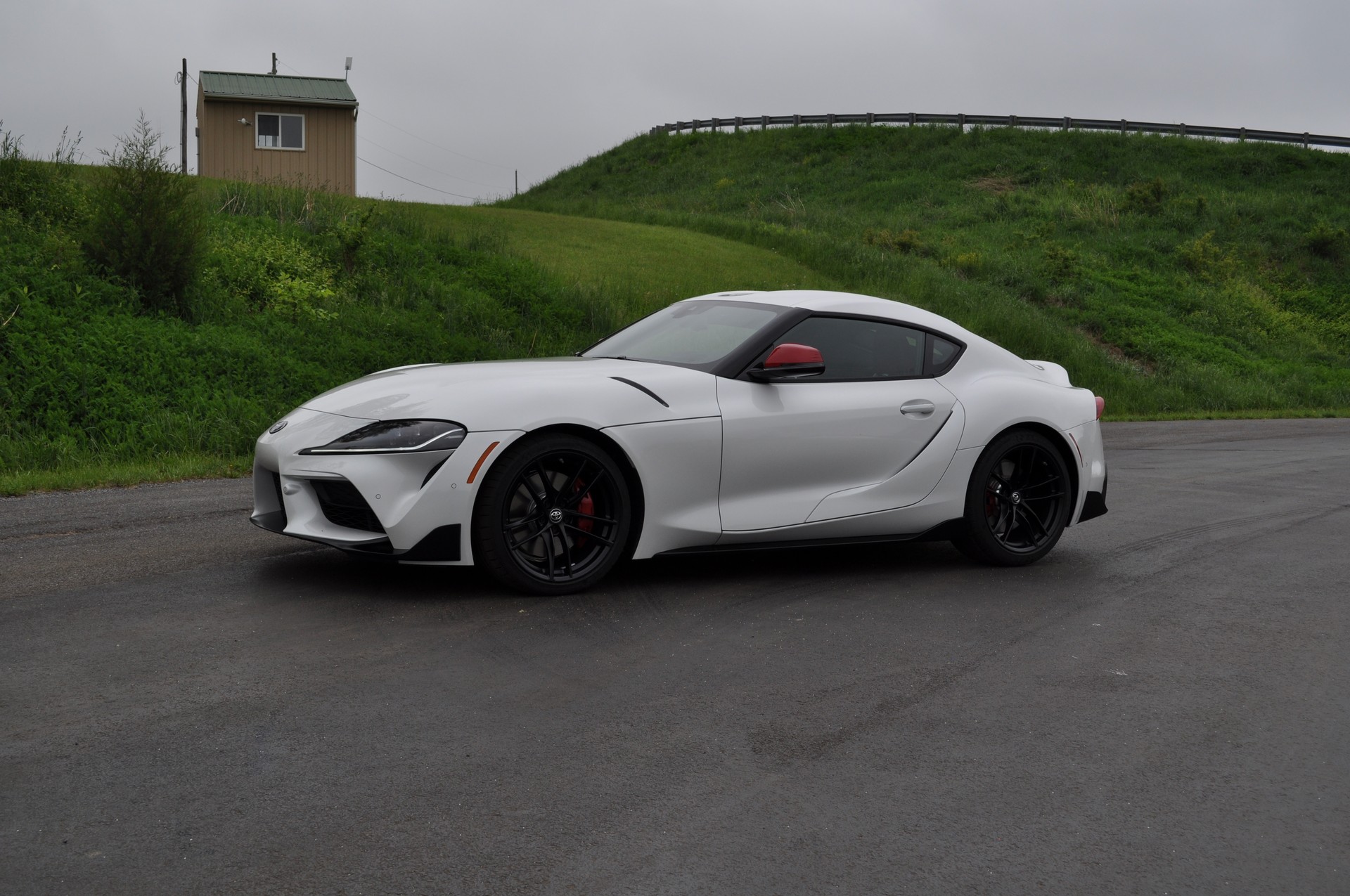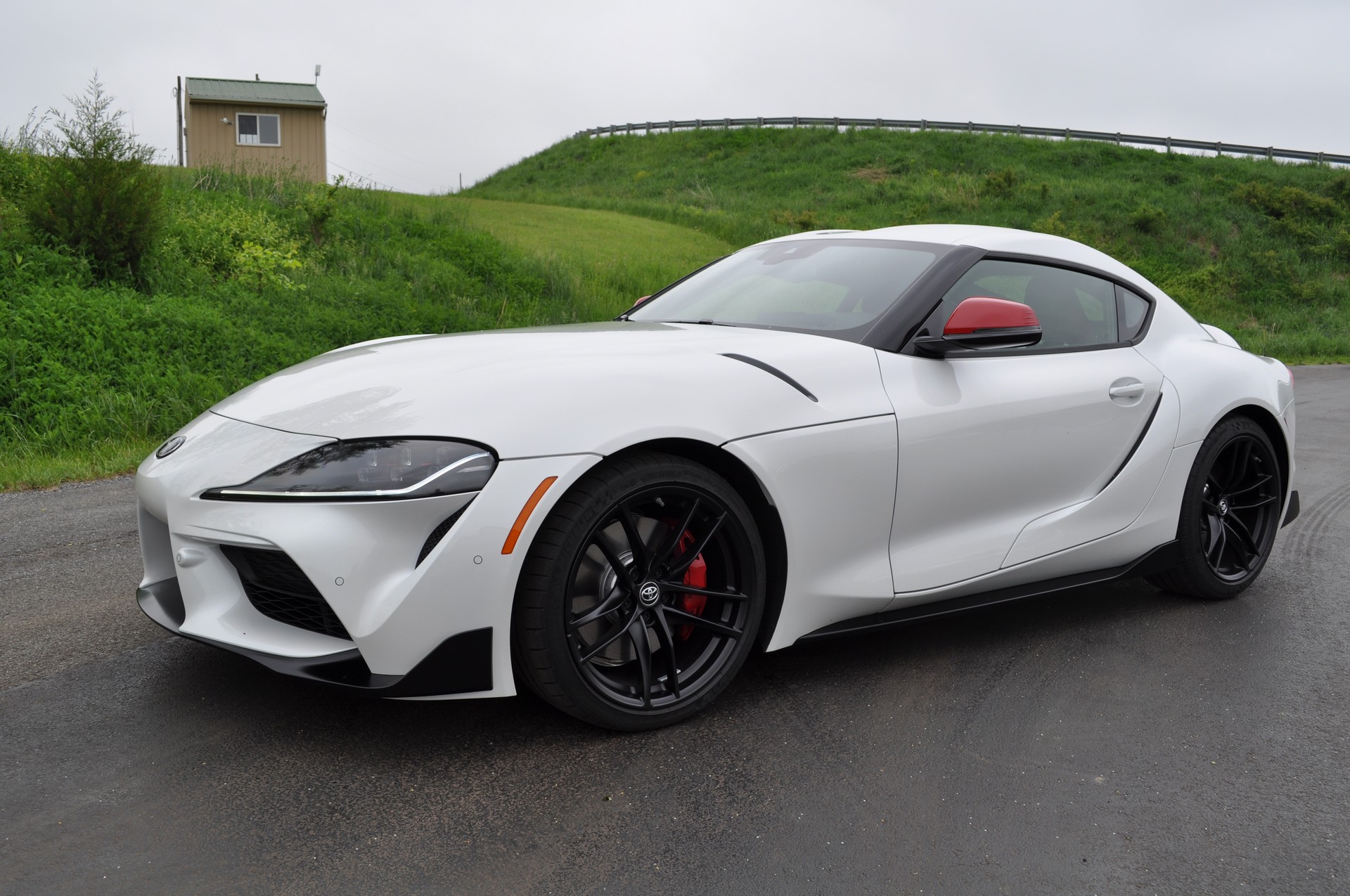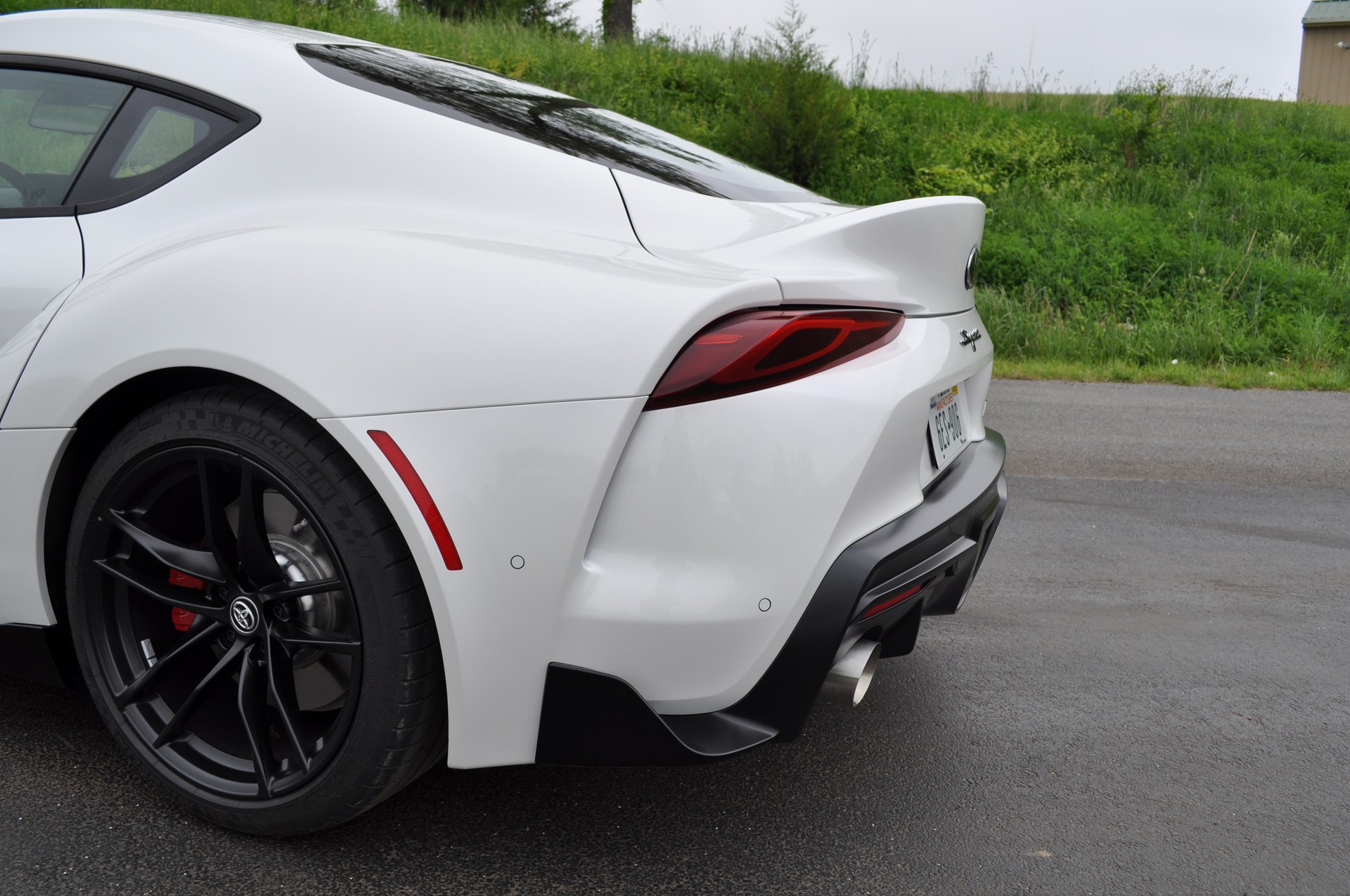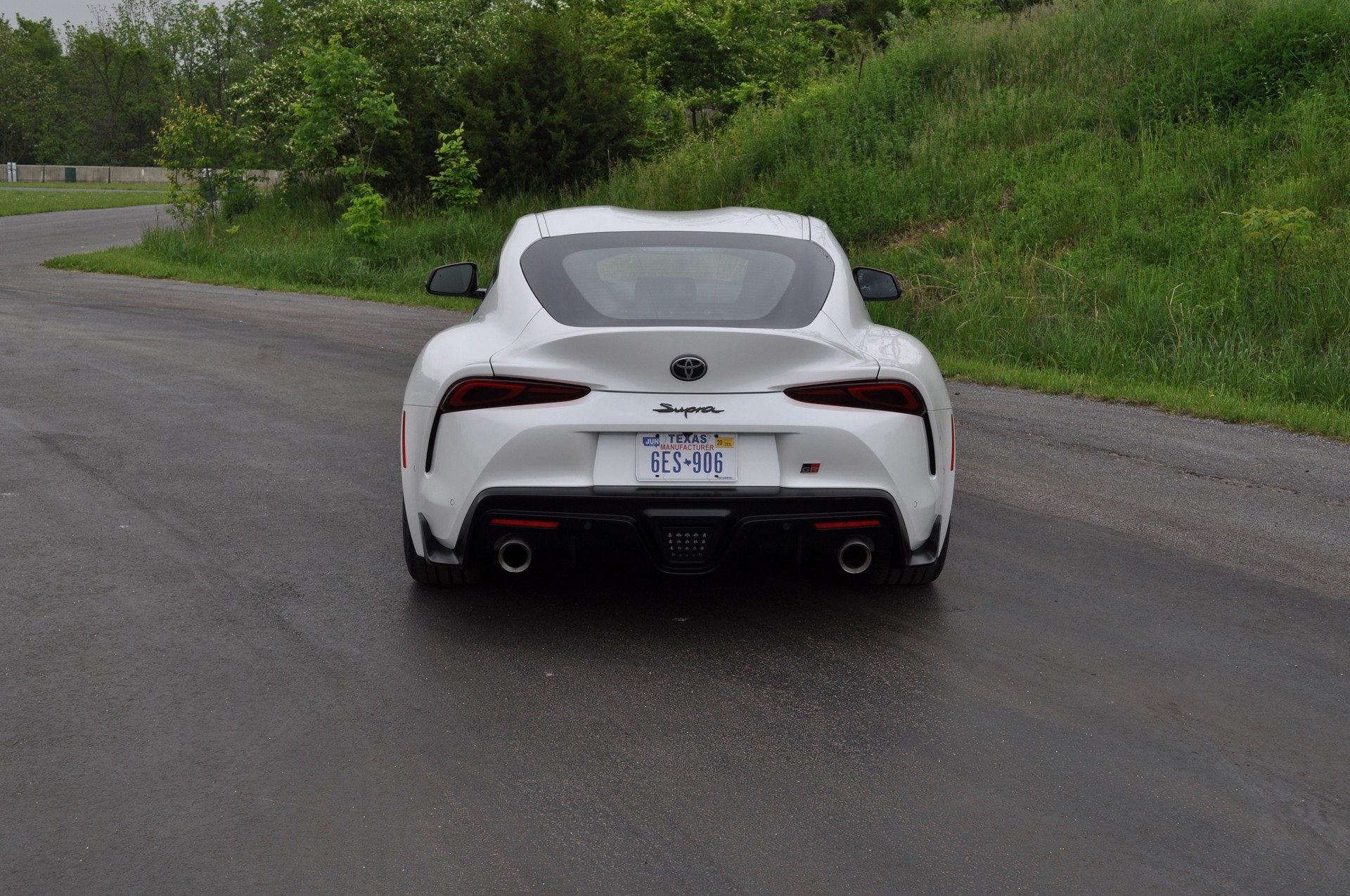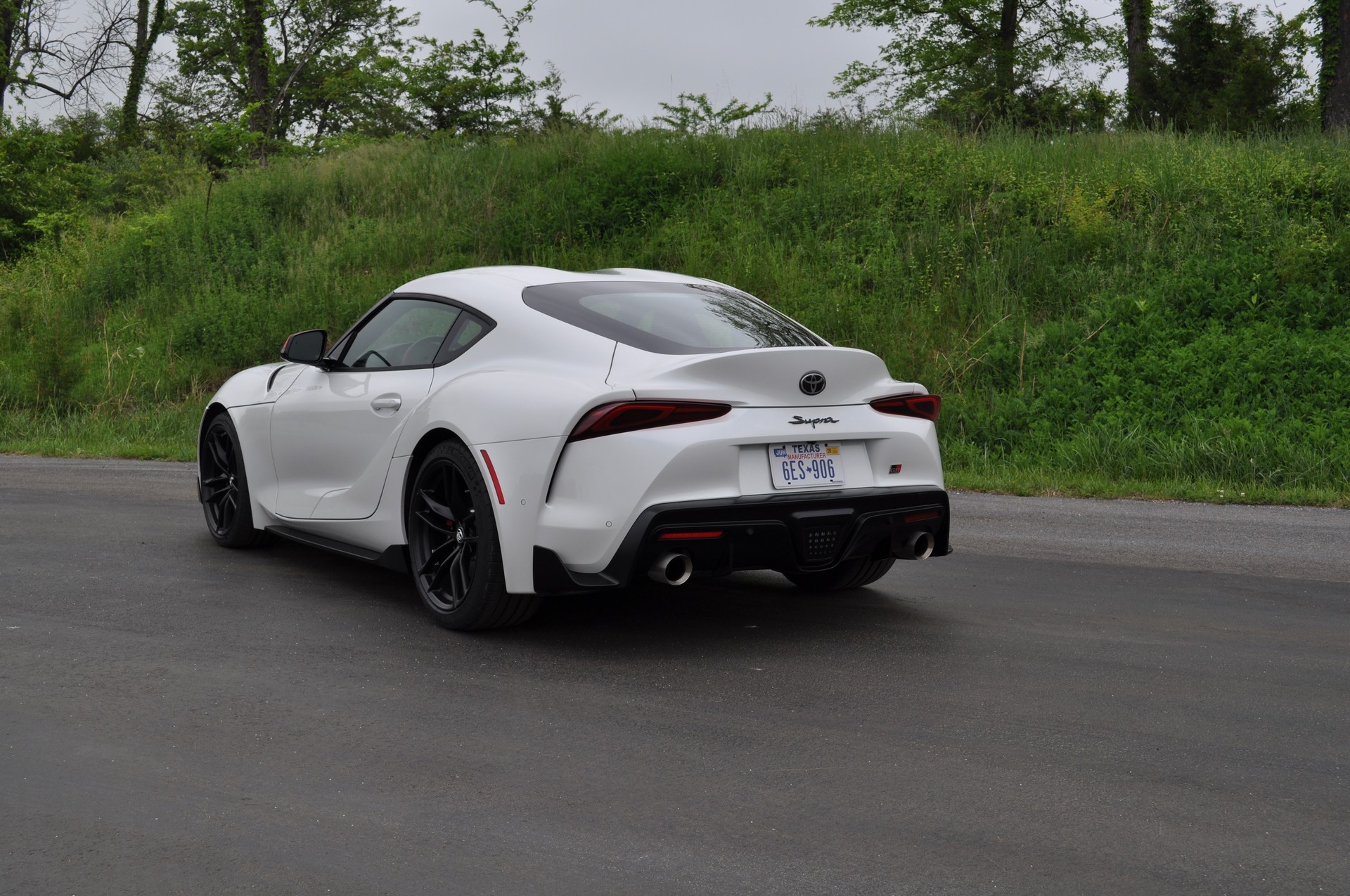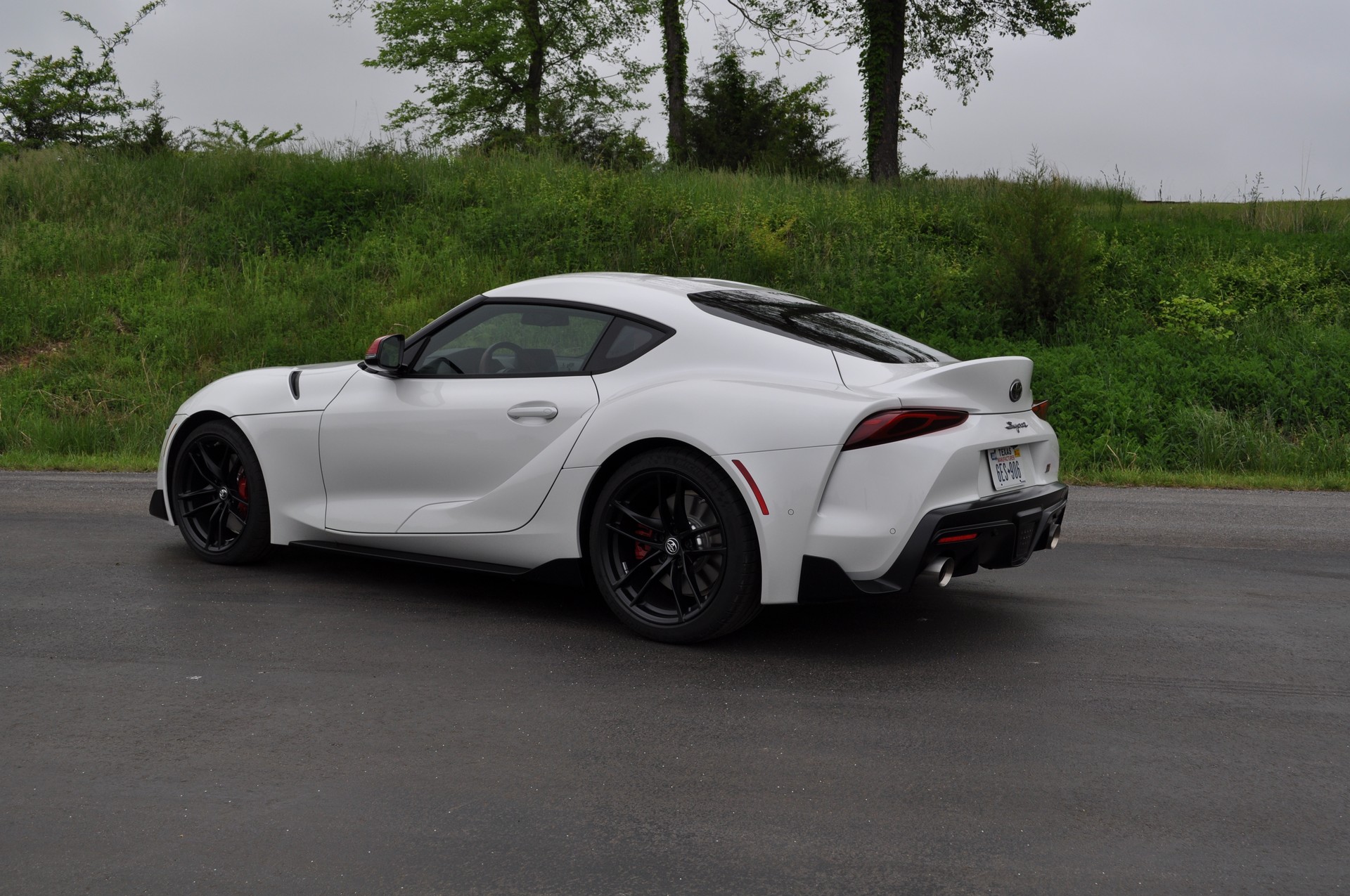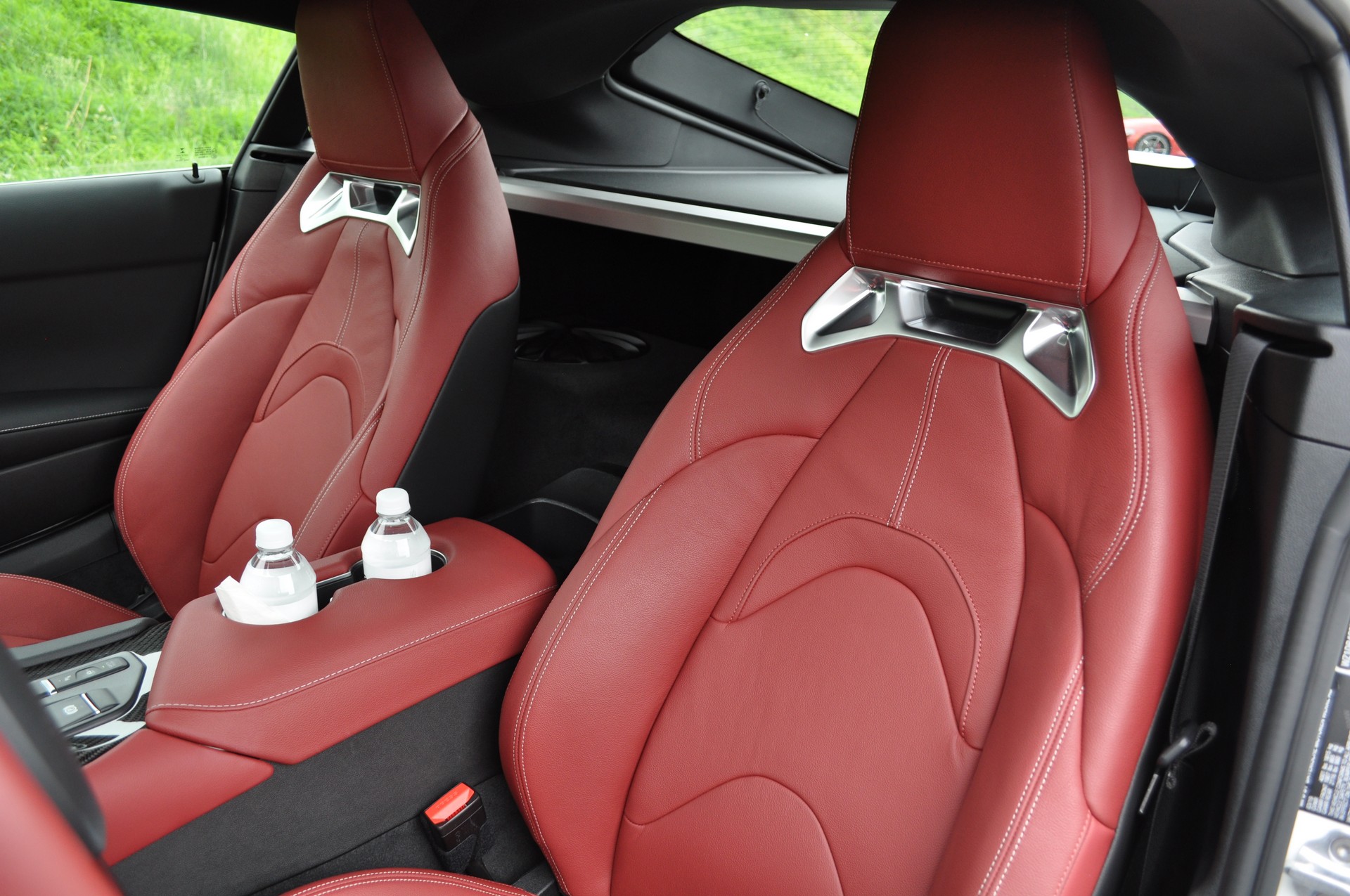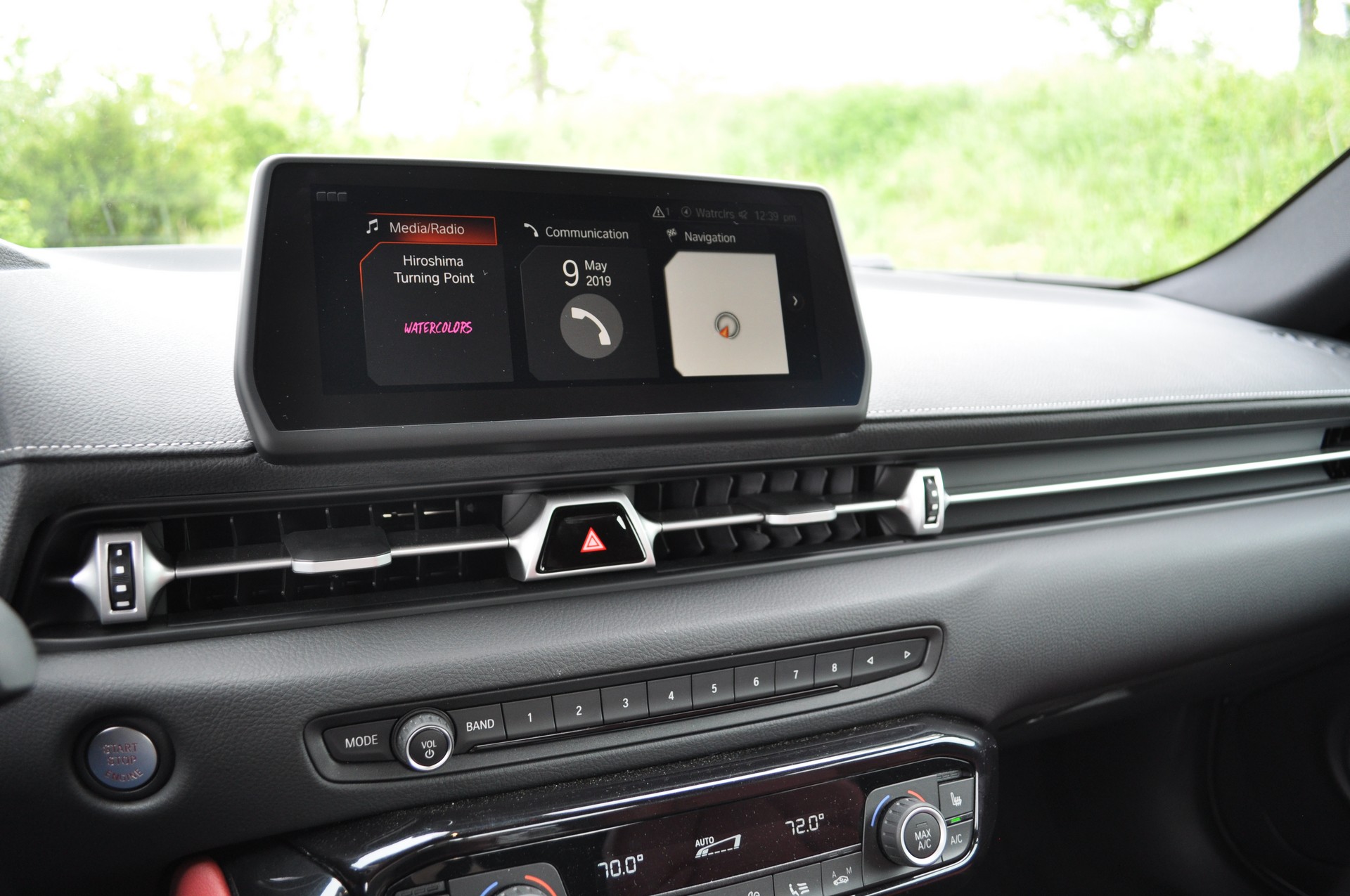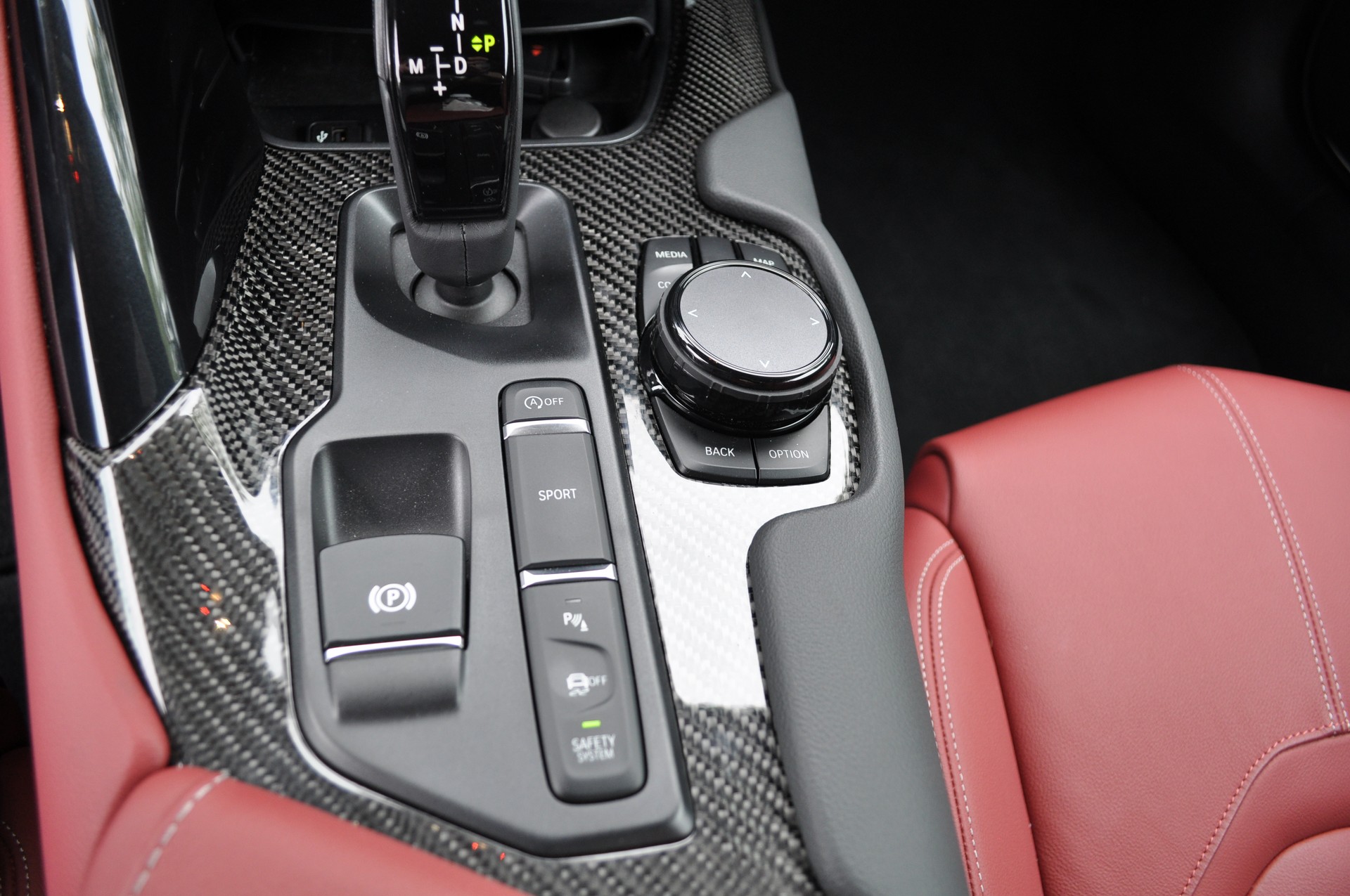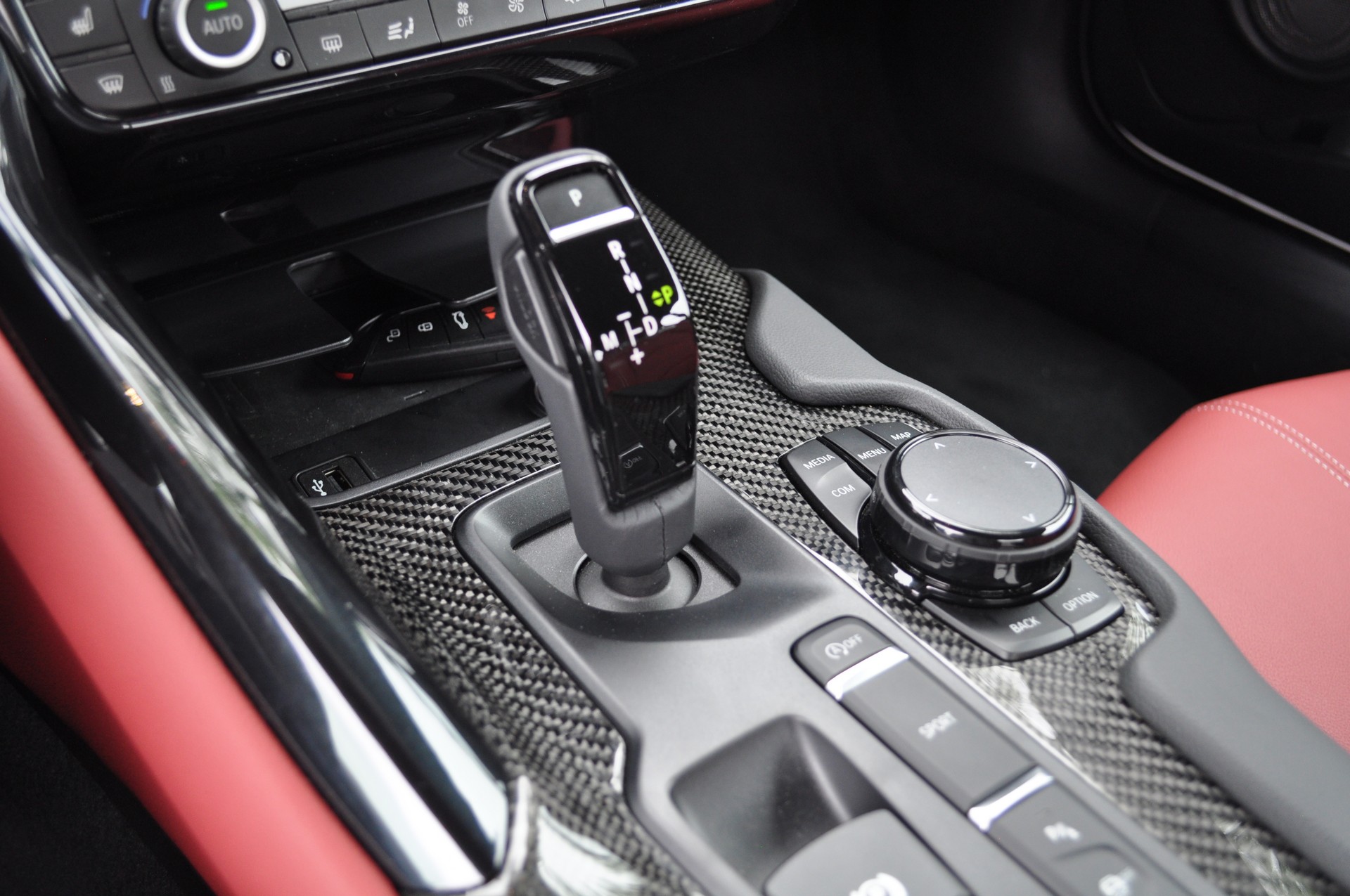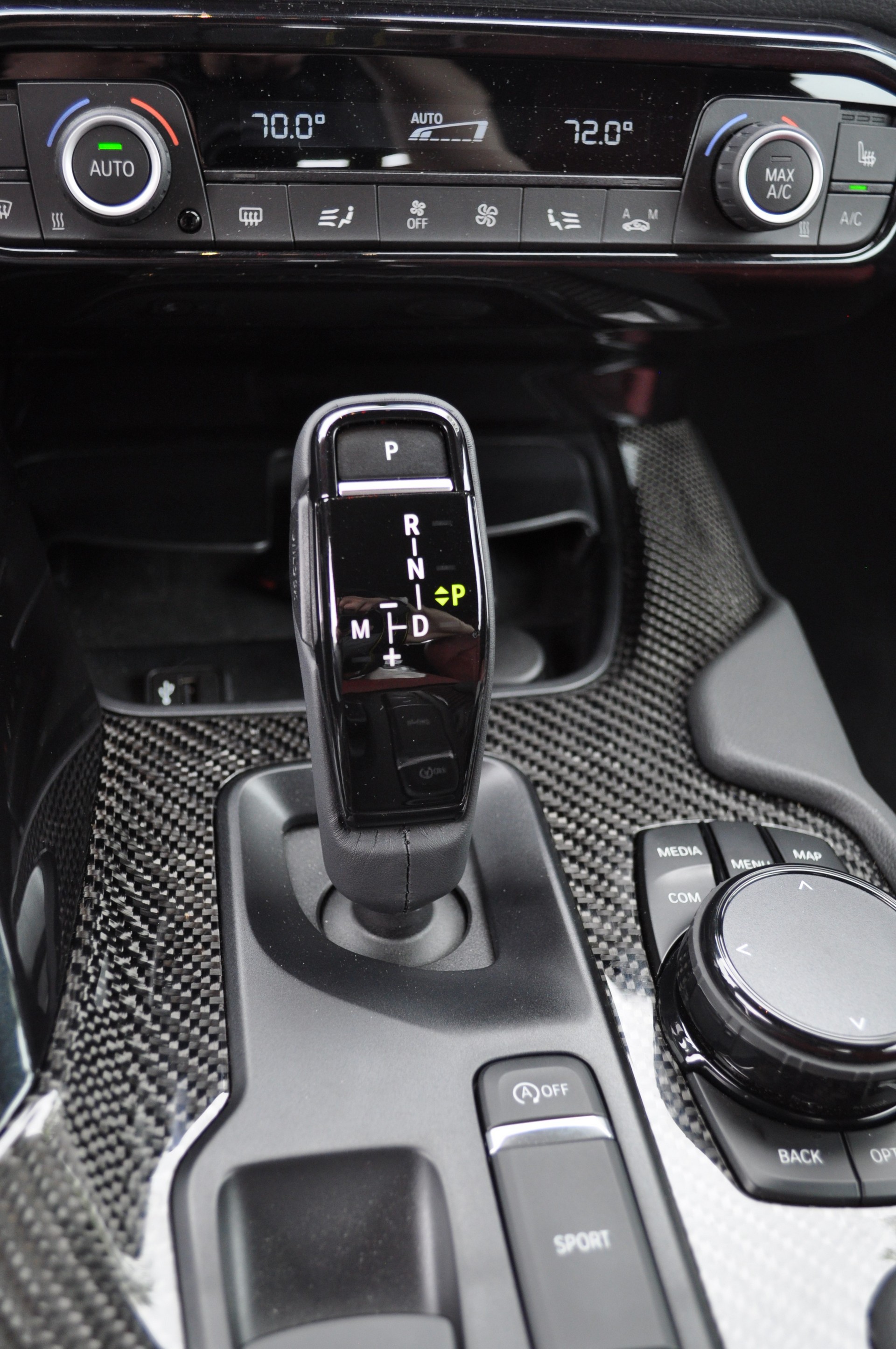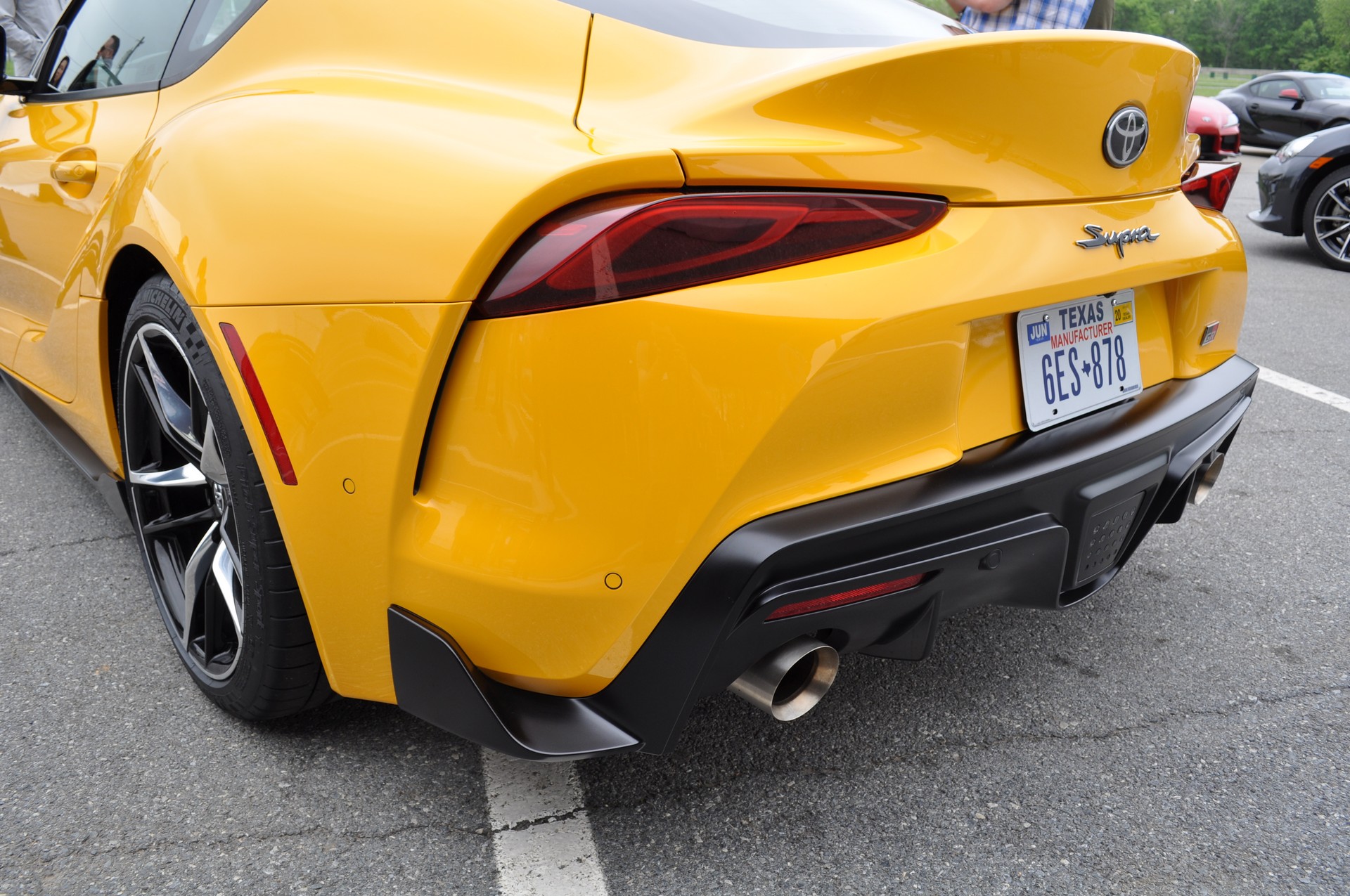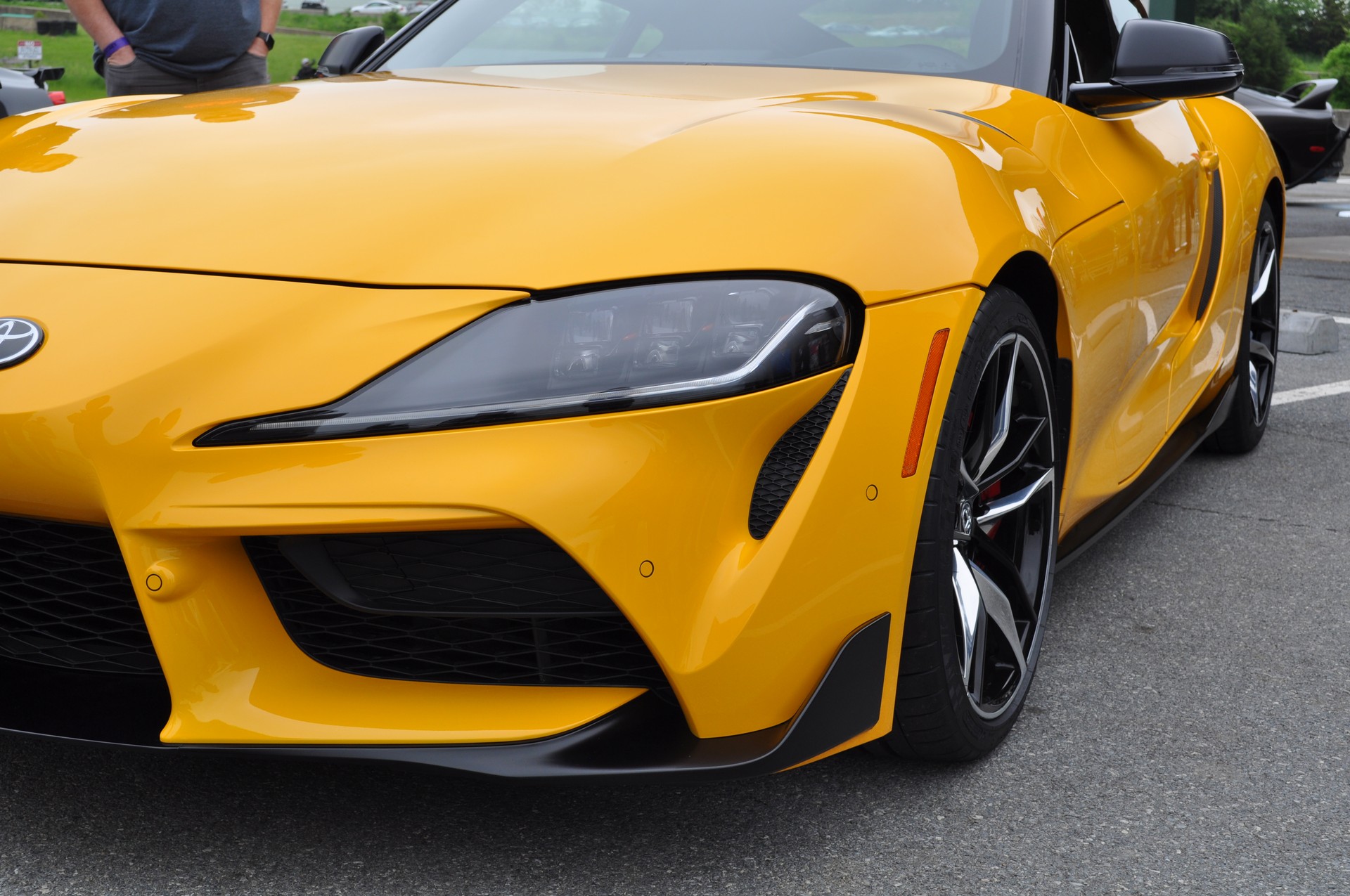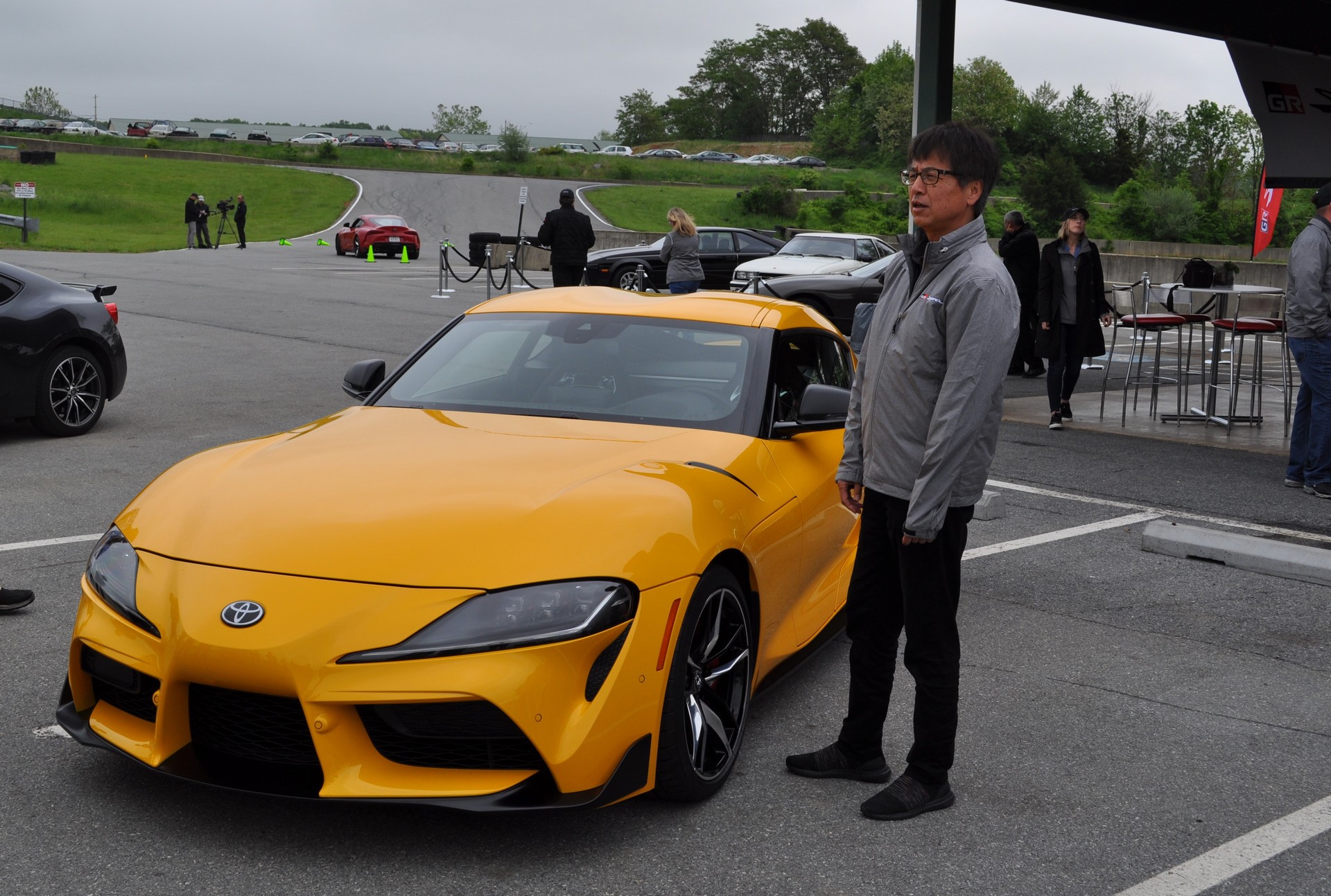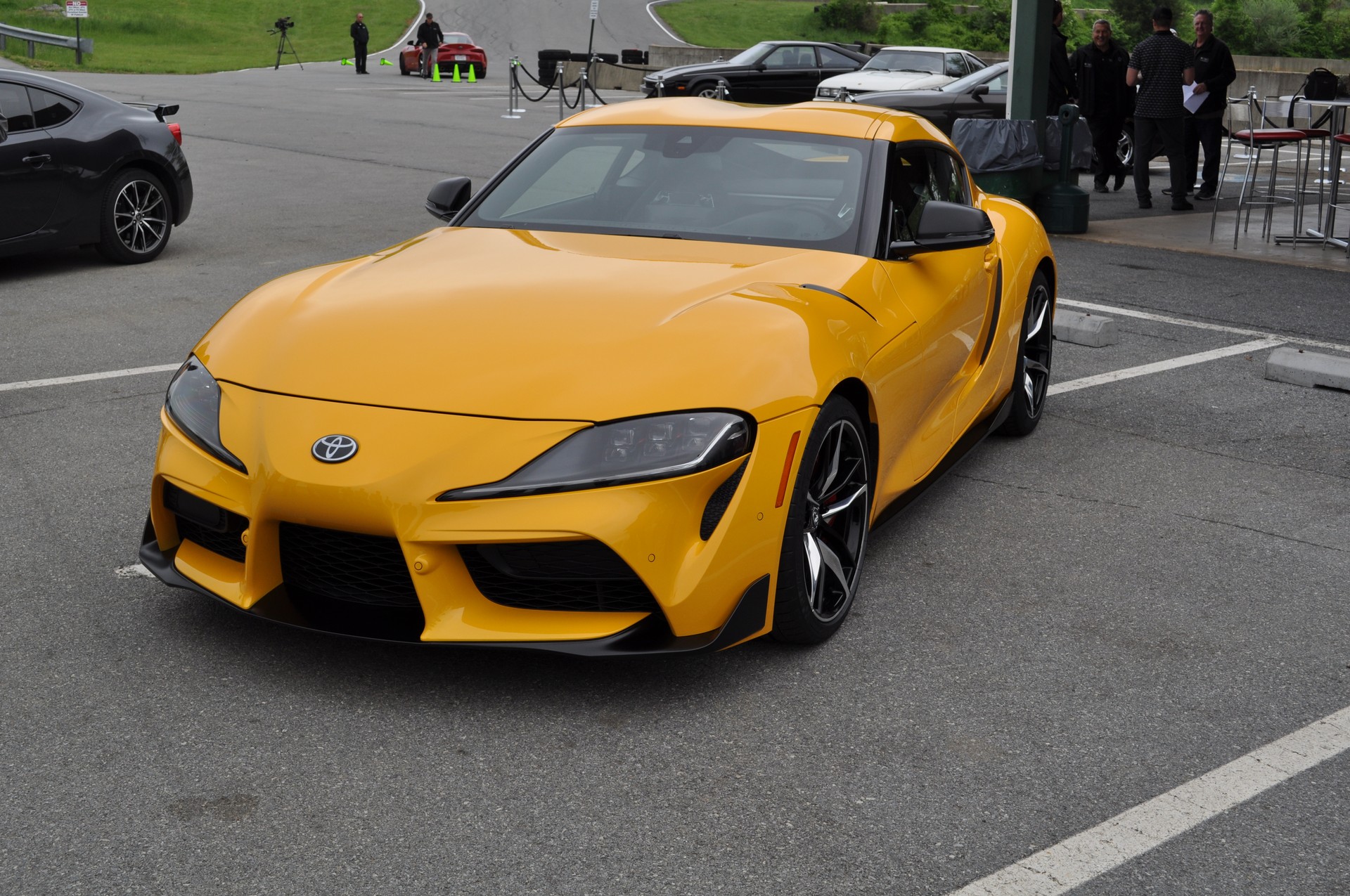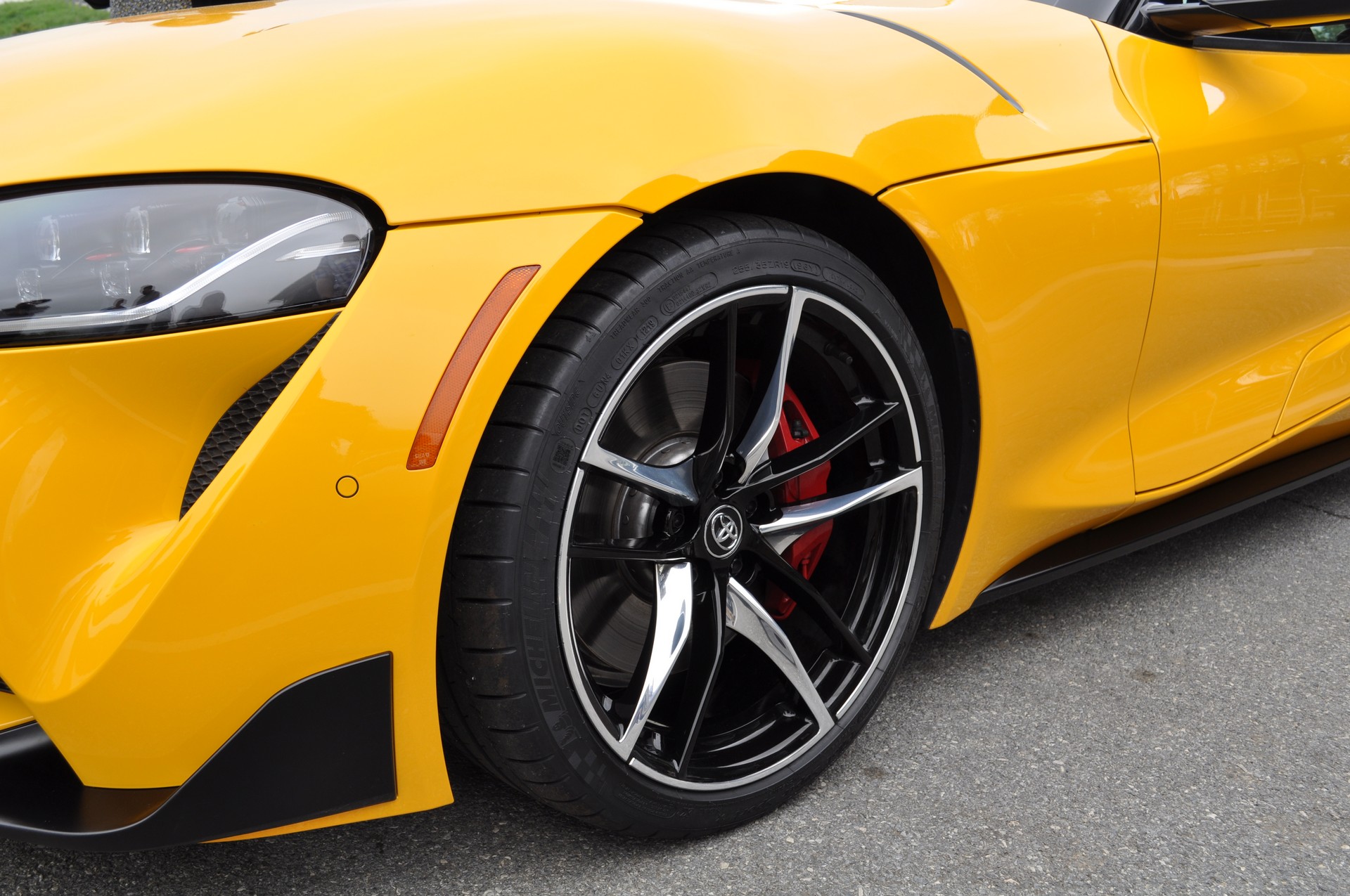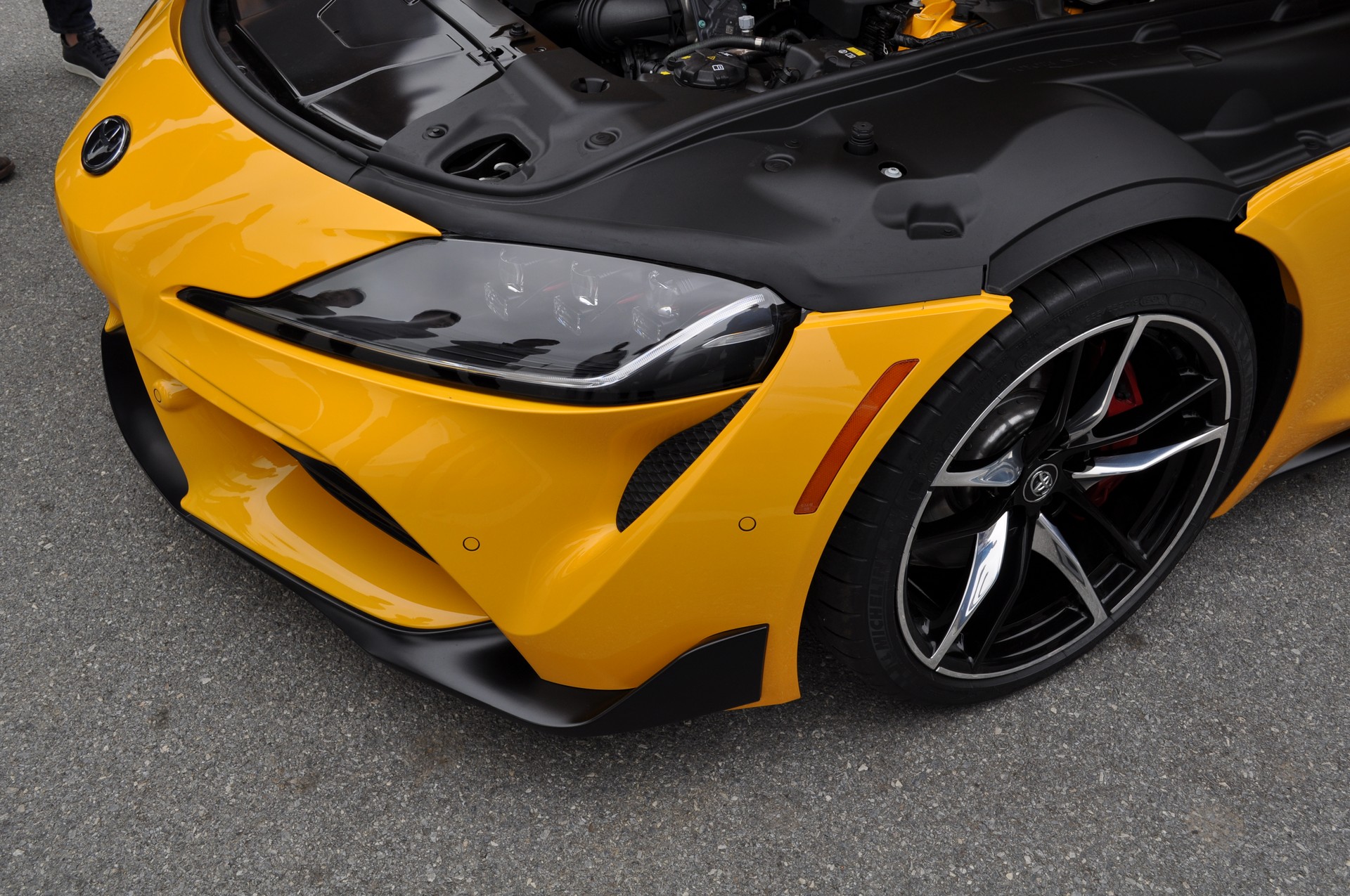It’s back! After a 21-year absence, the Toyota Supra returns to the United States this summer – and, we’ll think you’ll agree it was about time, too.
Created in collaboration with BMW, the 2020 GR Supra is the fastest road-going, production Toyota-badged model ever created and the first to be designed without any set fuel economy targets. As a result, it is a high-performance coupe which tries to live up to the legacy of its predecessors while also taking aim at the Porsche 718 Cayman that, until now, has set the bar in this niche.
All-New, But With Some Cues From The Past
Reviving an iconic model is a difficult task, but Toyota has succeeded in creating a car that feels like a natural evolution of the fourth-generation Supra that debuted in 1993. They managed to accomplish this by incorporating a number of cues from the FT-1 concept. Among the styling features that carryover are the double bubble roof and an evolution of the concept’s front fascia. Both models also feature bulging fenders, side scoops and stabilizer fins on the front spoiler and side skirts. The rear end is also similar to the concept, but the production model adopts a rear liftgate and a dual exhaust system which is integrated into the diffuser.
Overall, the Supra measures 172.5 inches (4,382 mm) long, 73 inches (1,854 mm) wide and 50.9 inches (1,293 mm) tall, with a wheelbase that spans 97.2 inches (2,469 mm). This means the car is 5.8 inches (147.32 mm) longer, 3.1 inches (79 mm) wider and 0.3 inches (8 mm) taller than the 86. However, the Supra has a 4 inch (102 mm) shorter wheelbase and sits 0.4 inches (10 mm) lower to the ground.
A Classy, BMW-ish Cabin
While the exterior styling is unique, the cabin certainly has a BMW vibe as a number of components carryover from an assortment of Munich’s models. Chief among them are the shifter, switchgear and iDrive infotainment system which is available with either a 6.5- or 8.8-inch display.
Die-hard Supra fans will probably detest this, but the cabin comes nicely equipped with 14-way power leather / Alcantara sport seats, an 8.8-inch digital instrument cluster and carbon fiber trim. Drivers will also find a dual-zone automatic climate control system, an auto-dimming rearview mirror, a 10-speaker audio system and a leather-wrapped steering wheel with paddle shifters.
The Supra 3.0 Premium packs on additional equipment including heated leather seats, a wireless smartphone charger and a 12-speaker JBL premium audio system. Buyers will also find a color head-up display, wireless Apple CarPlay (Android users, you’re out of luck) support and a larger 8.8-inch infotainment system with GPS navigation.
The upgrades are nice and every Supra has a spacious cabin with surprising head- and legroom. The seats are heavily bolstered, yet comfortable for both road and track use. Furthermore, the cabin is well put together and nearly everything has a premium feel.
Mind you, there isn’t much storage space, but the liftgate opens to reveal a small boot with a short pass through. Space is at a premium, but there should be enough to hold several backpacks or a couple of carry-on bags.
The Inline-Six Returns
In the United States, the Supra will be offered exclusively (for now…) with a turbocharged 3.0-liter inline-six sourced from BMW that produces 335 hp (250 kW / 340 PS) and 365 lb-ft (494 Nm) of torque.
The engine is paired to an eight-speed automatic transmission from ZF and sends power to the rear wheels via an active differential which “senses” what’s happening and can respond by locking up to 100%. This setup enables the coupe to accelerate from 0-60 mph (0-96 km/h) in approximately 4.1 seconds and hit an electronically limited top speed of 155 mph (250 km/h). Very German, that one…
The powertrain is a delight, as the engine is a willing partner that always feels like it has more power to give. While it’s not quite as strong as the US-spec BMW Z4 M40i, which has 382 hp (285 kW / 387 PS) and 369 lb-ft (500 Nm) of torque, it feels more than adequateand a quick prod of the accelerator results in near instantaneous response. Some fans will undoubtedly want more power and they’ll be able to turn to aftermarket specialists, who are already working on upgrades for the car – and probably getting ready for the influx of customers.
Despite being billed as a pure sports car, the Supra doesn’t use a dual-clutch transmission, though the eight-speed gearbox is nothing to look down upon as it’s well suited for performance models. Gear changes are fast and perfectly timed, even on the track where the transmission has to make multiple changes in rapid succession. More importantly, the geabox is smooth and comfortable on the road.
While the Supra wasn’t designed with fuel economy in mind, it’s not too thirsty at the pump, having an EPA-estimated fuel economy rating of 24 mpg city, 31 mpg highway and 26 mpg combined. Unfortunately, the car requires pricey premium fuel.
The 2020 GR Supra has three different drive modes: Normal, Sport and Sport Individual, with Sport sharpening throttle response, increasing steering weight, delivering crisper shifts, livening up the exhaust and making the active differential respond more aggressively. The changes are noticeable and users can fine-tune them by selecting Sport Individual, which allows owners to adjust each setting to suit their tastes.
The Supra also offers three settings for the Vehicle Stability Control system. Normal keeps the system fully engaged, while Traction loosens the electronic watchdog to allow for a bit more fun. Drivers can also fully deactivate the system by selecting VSC Off.
Delivering On The Sports Front
Sticking with the performance theme, the Supra has excellent handling thanks, in no small part, to its 50:50 weight distribution. The ride is also surprisingly comfortable and has a premium feel that can likely be chalked up to its active dampers and BMW pedigree.
The steering is pretty good, being quick and responsive without ever getting twitchy. It doesn’t feel quite as natural as the one on the 86, but it’s predictable and accurate nonetheless.
Braking performance is also excellent. This is due to the Supra’s high-performance braking system which features 13.7 inch (348 mm) ventilated front discs which are backed up by Brembo four-piston fixed calipers. The rear discs measure 13 (330 mm) or 13.6 inches (345 mm) and are paired with a single piston floating caliper.
The only thing that mars the driving experience is the Supra’s exhaust system. It produces a loud exhaust crackle which may seem cool at first, but quickly becomes tiring. Taking the car out of Sport mode lessens the effect, but it’s still there and far more present than any noises associated with the turbo.
Do not let all of the above fool you into thinking that it’s more akin to a grand tourer; this thing can dance on the track. During hot laps with master driver Herwig Daenens, the car’s dual personality becomes readily apparent as it’s a beast which can drift like crazy or go after impressive lap times – it’s your call.
In the hands of less experienced drivers, the Supra is still rewarding and encourages you to push it harder. As you’ll become more familiar with the car and track, laps times will surely drop.
While track driving can be intimidating for some, the various modes mean you can explore its limits without completely disabling the electronic nannies, so the various safety systems can intervene before things get too hairy. Of course, you can send them all to sleep and take matters into your own hands (and feet).
A Luxurious Coupe With A Dual Personality
The 2020 Toyota GR Supra was seven years in the making and the payoff appears to be worth the wait. While fans might roll their eyes at the partnership with BMW, it helped to spawn a stylish sports car with an upscale interior, plenty of power and great handling characteristics.
It also has a dual personality which enables it to be a comfortable and luxurious sports car on the road as well as a star on the track. That’s a relatively rare combination and it’s impressive that Toyota managed to get the balance just right.
There’s a lot to love about the new Supra, and it’s reasonably priced as the entry-level model starts at $49,990 before a $930 delivery, processing and handling fee. That means it actually costs $500 less than the Supra Turbo from 1996.
So, these are our impressions from experiencing Toyota’s halo sports car for the first time. We’ll have a lot more to say about the 2020 Supra later this week, as we’ll explore the car’s relationship with the Z4 in greater detail and answer your questions from last week’s Ask Us Anything post, thus you might want to stay tuned.




